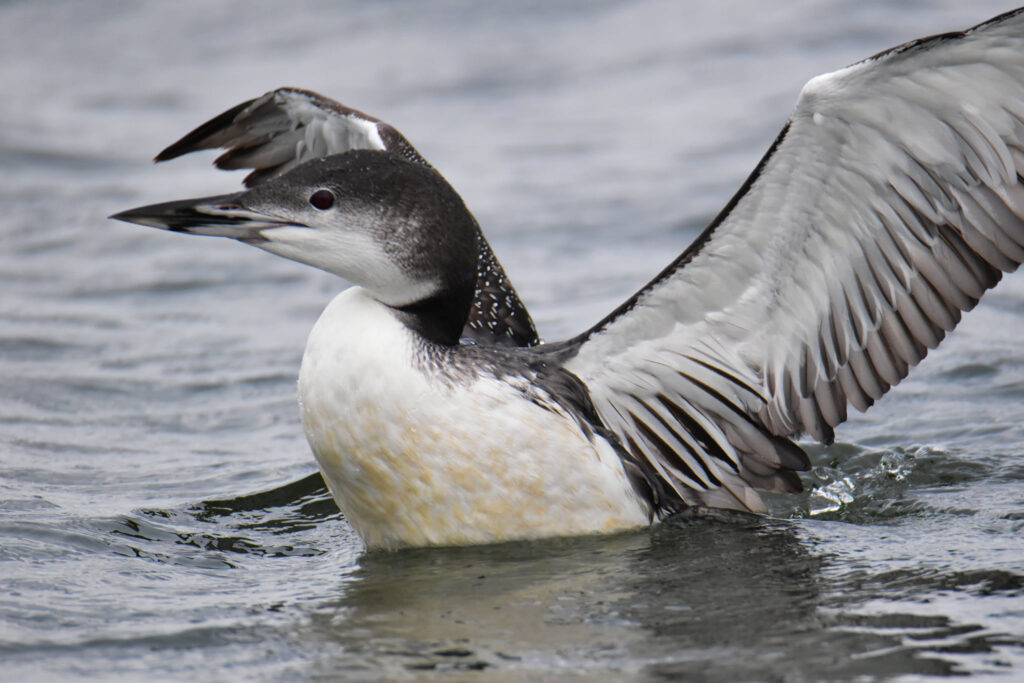
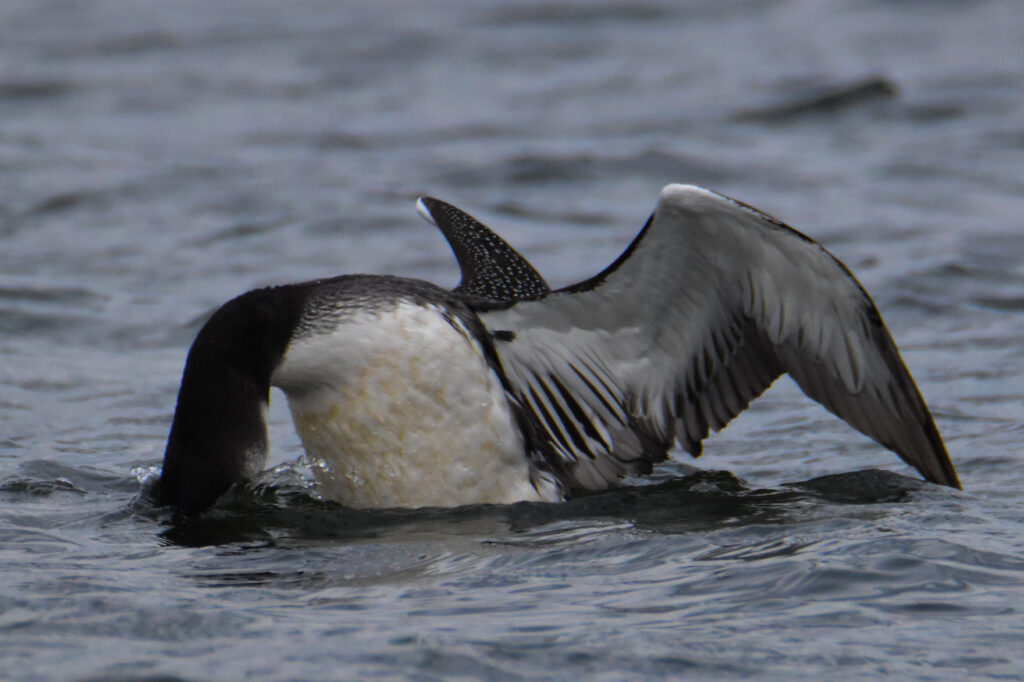
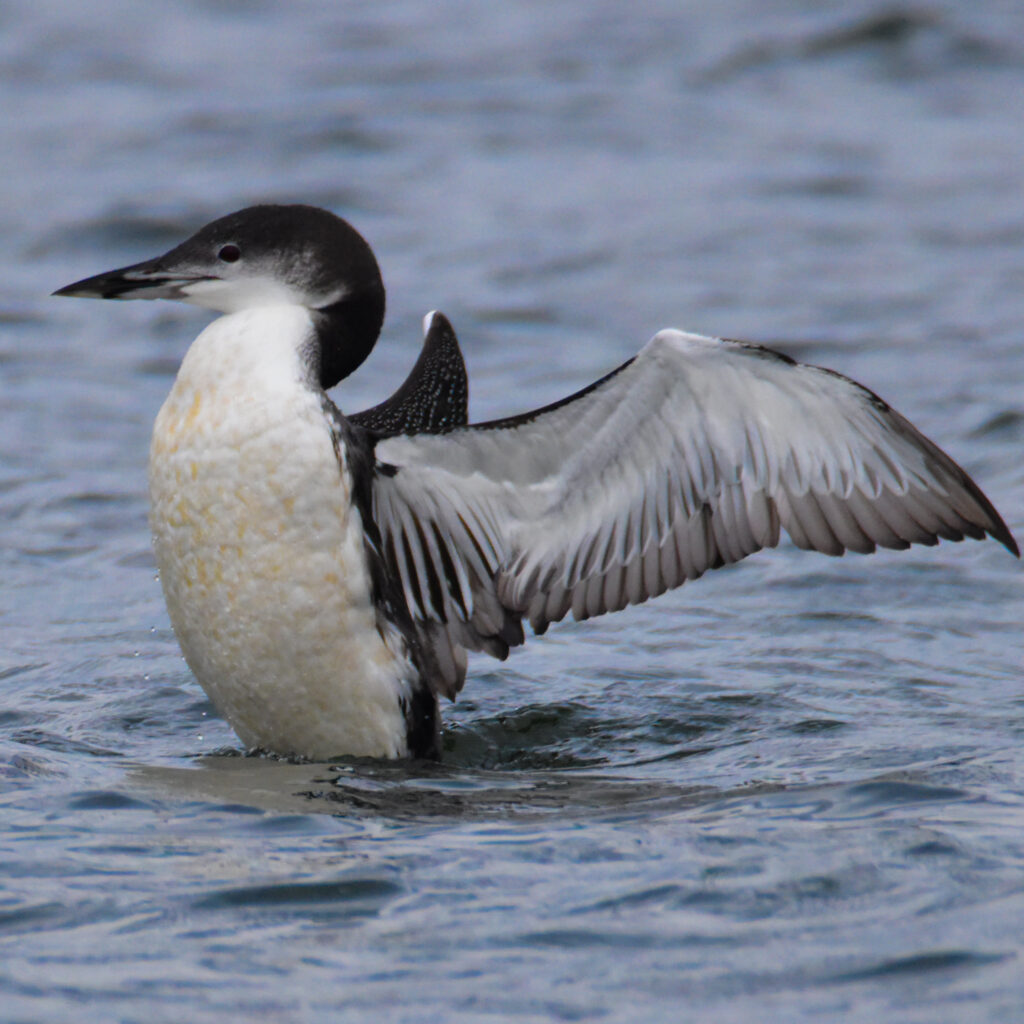
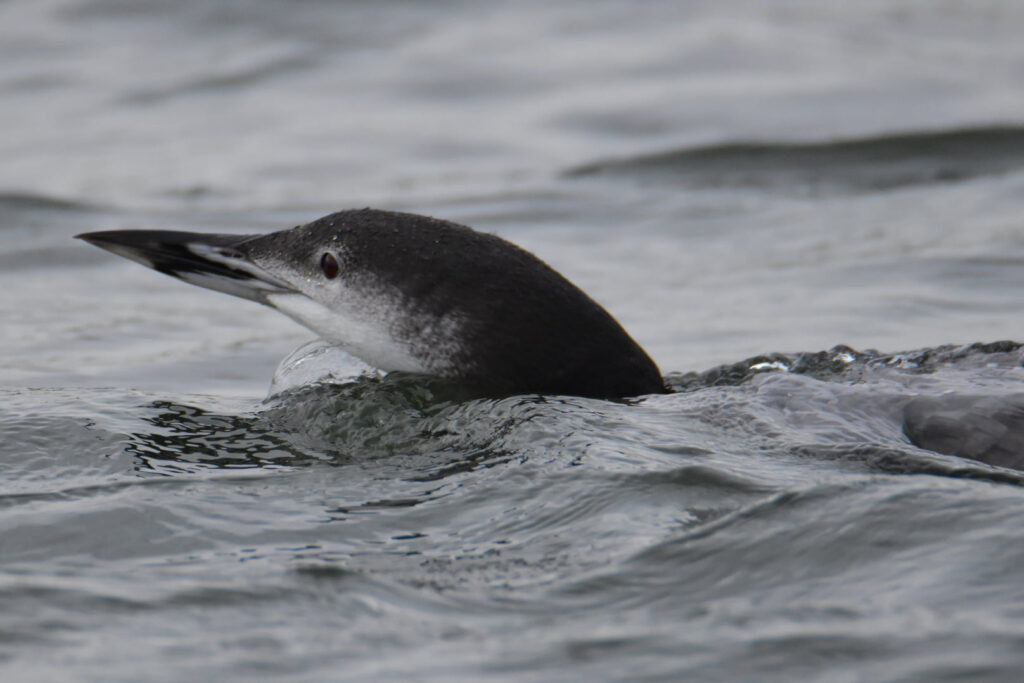

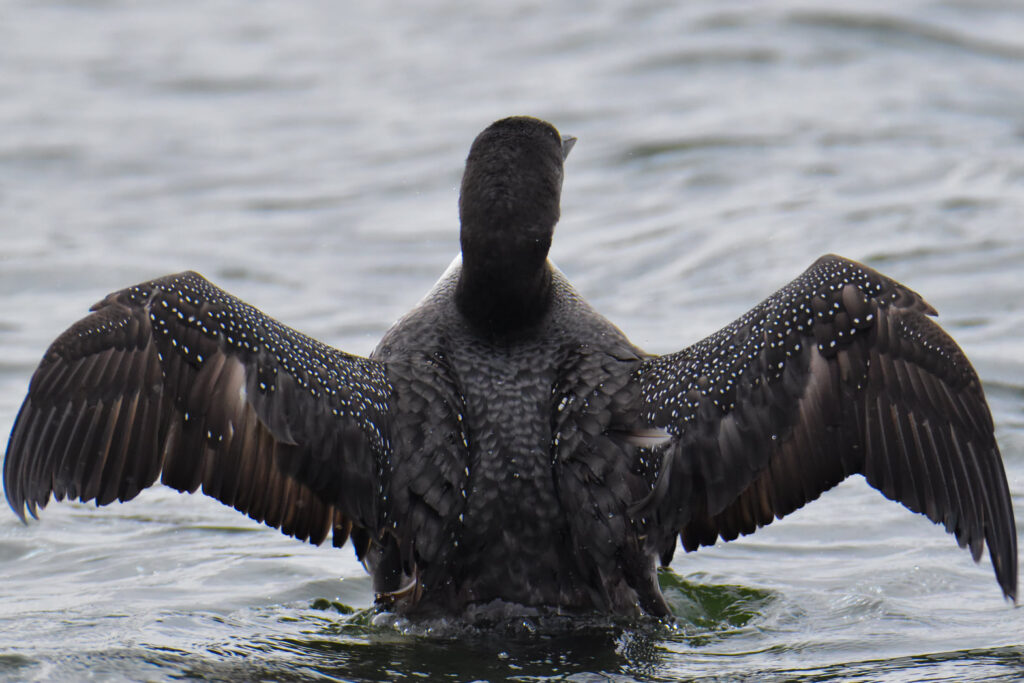
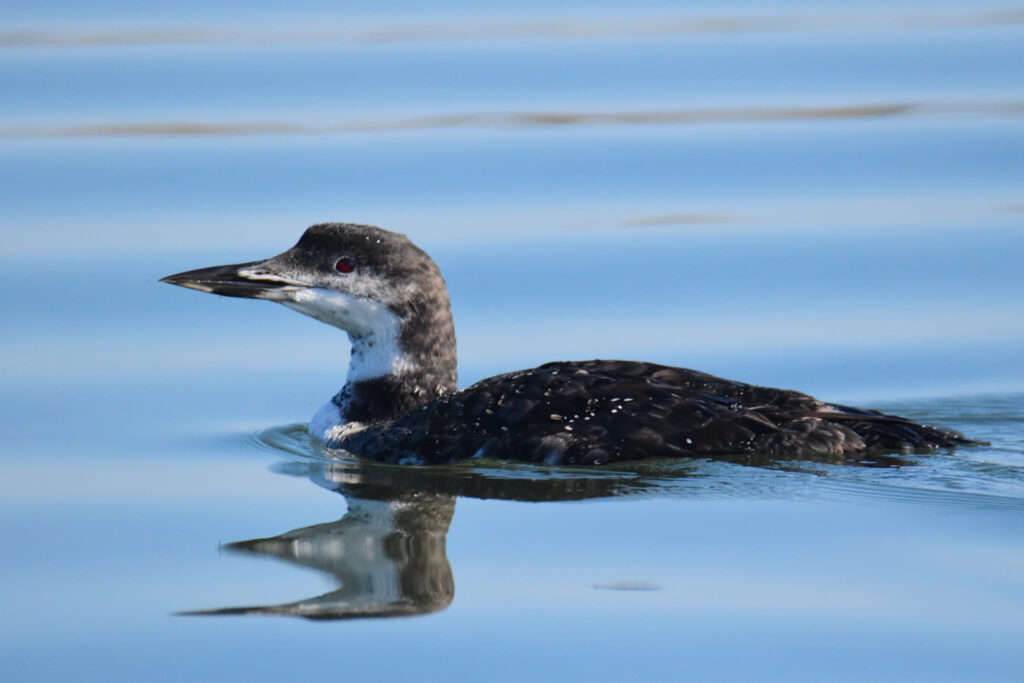
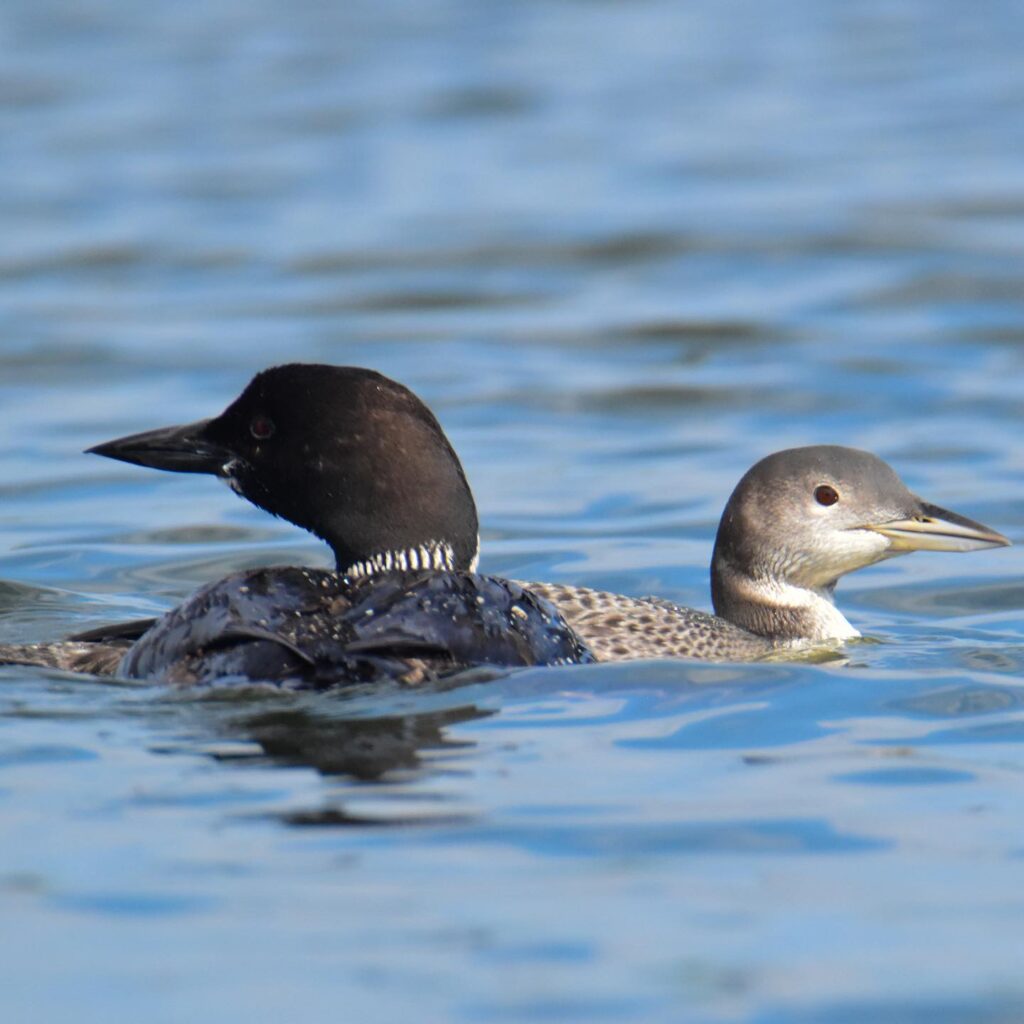
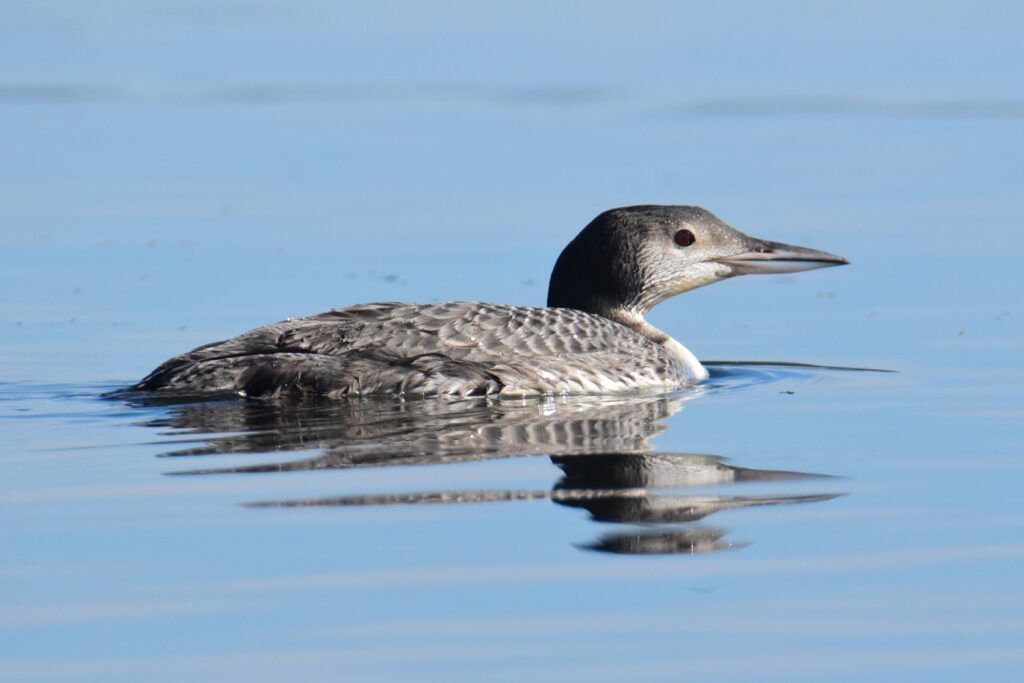
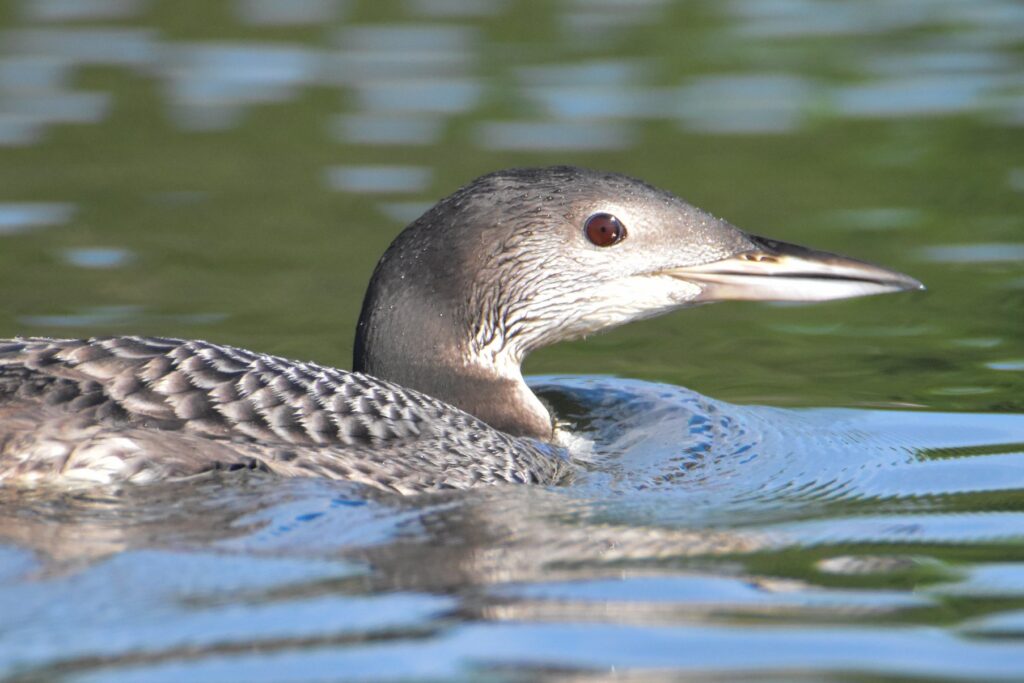
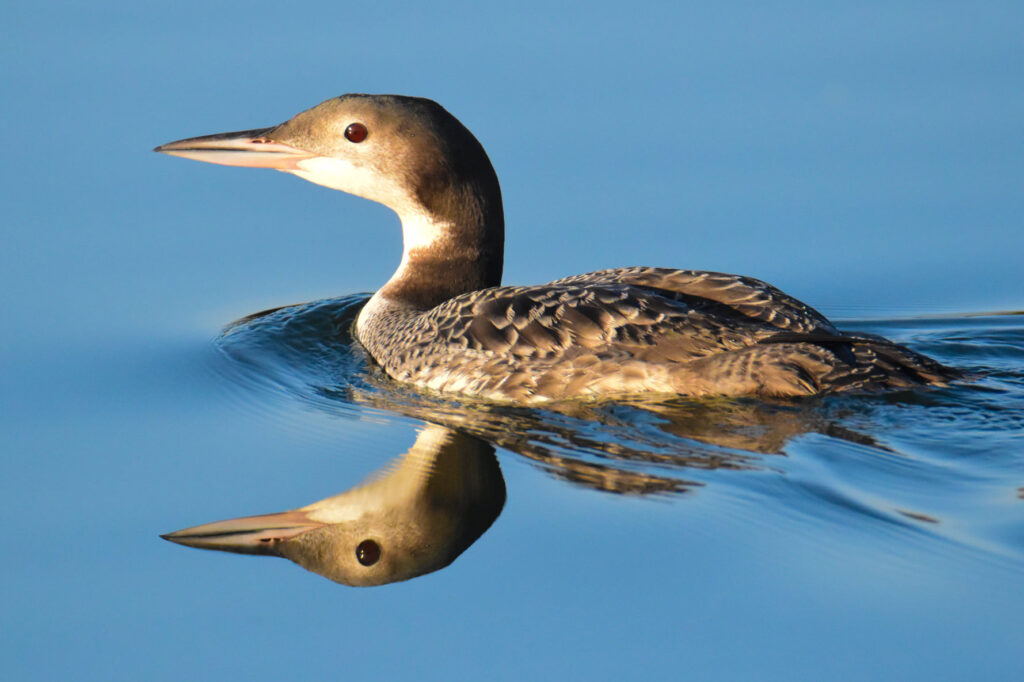
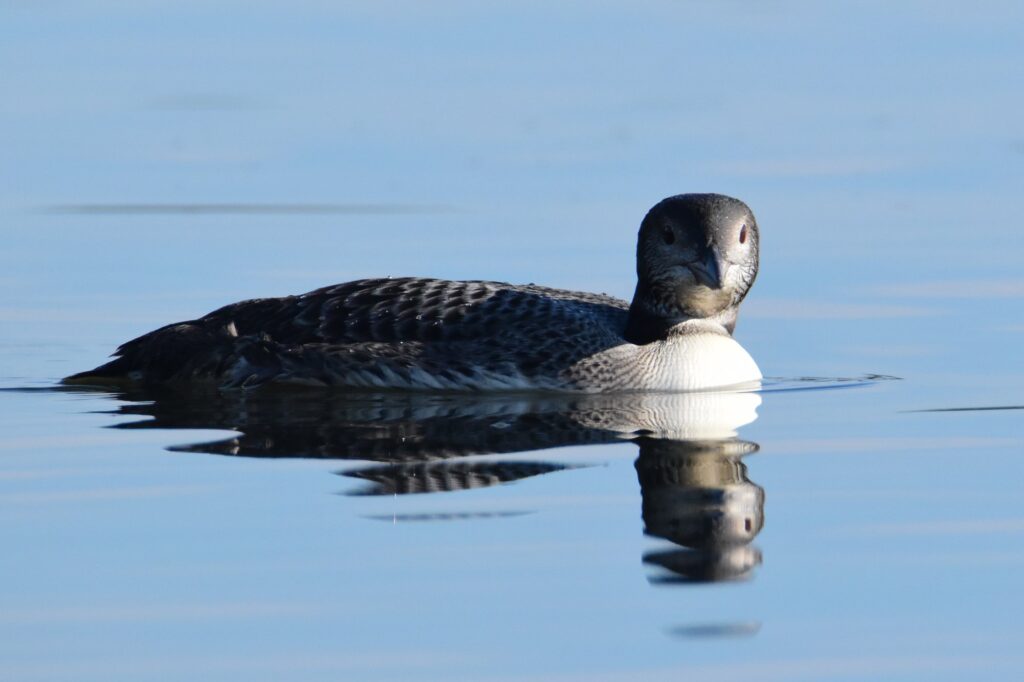
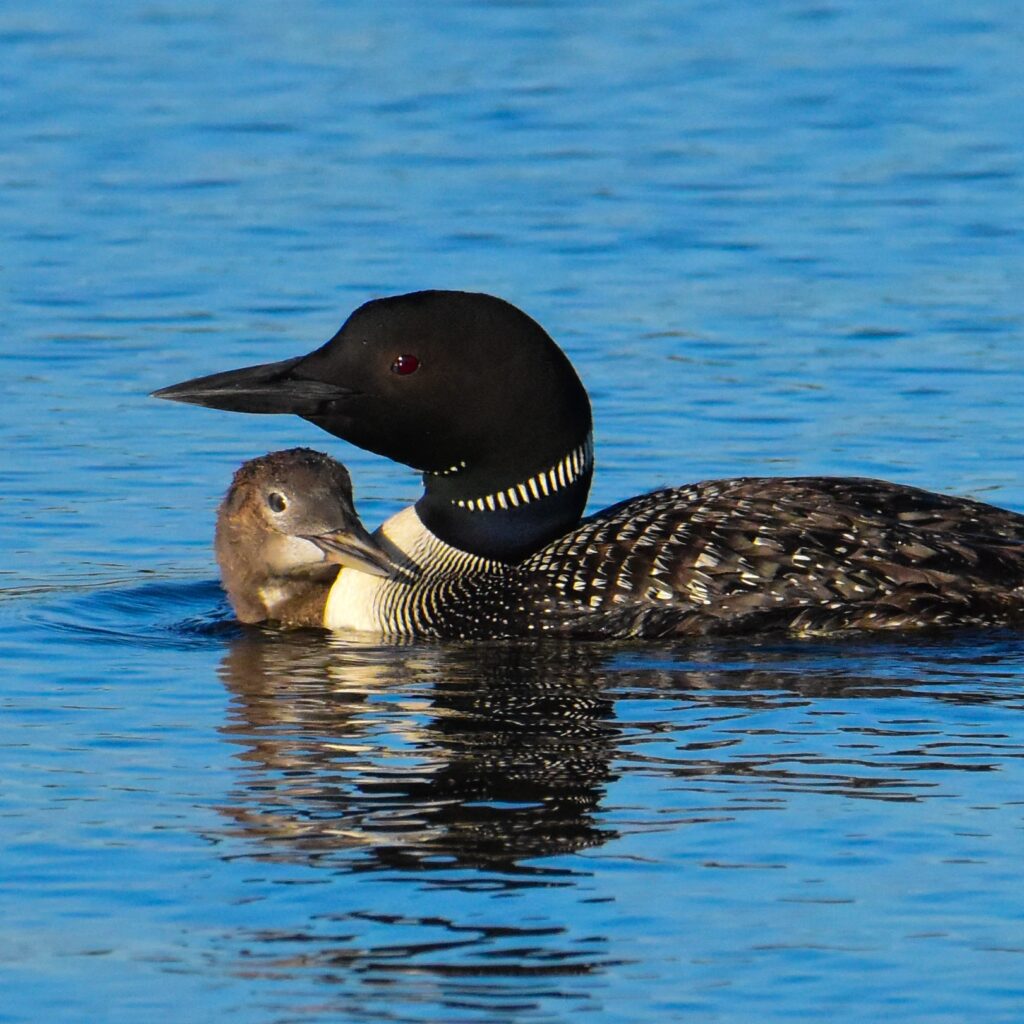



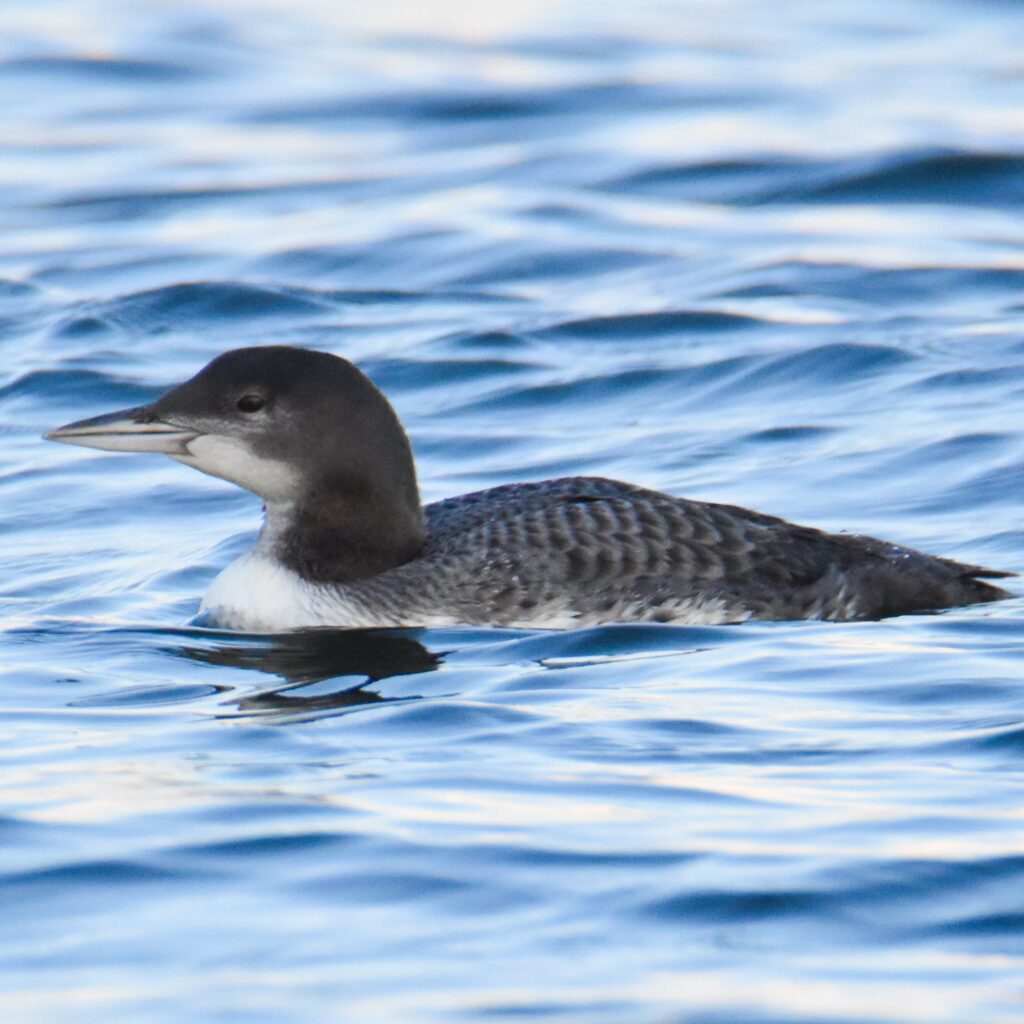
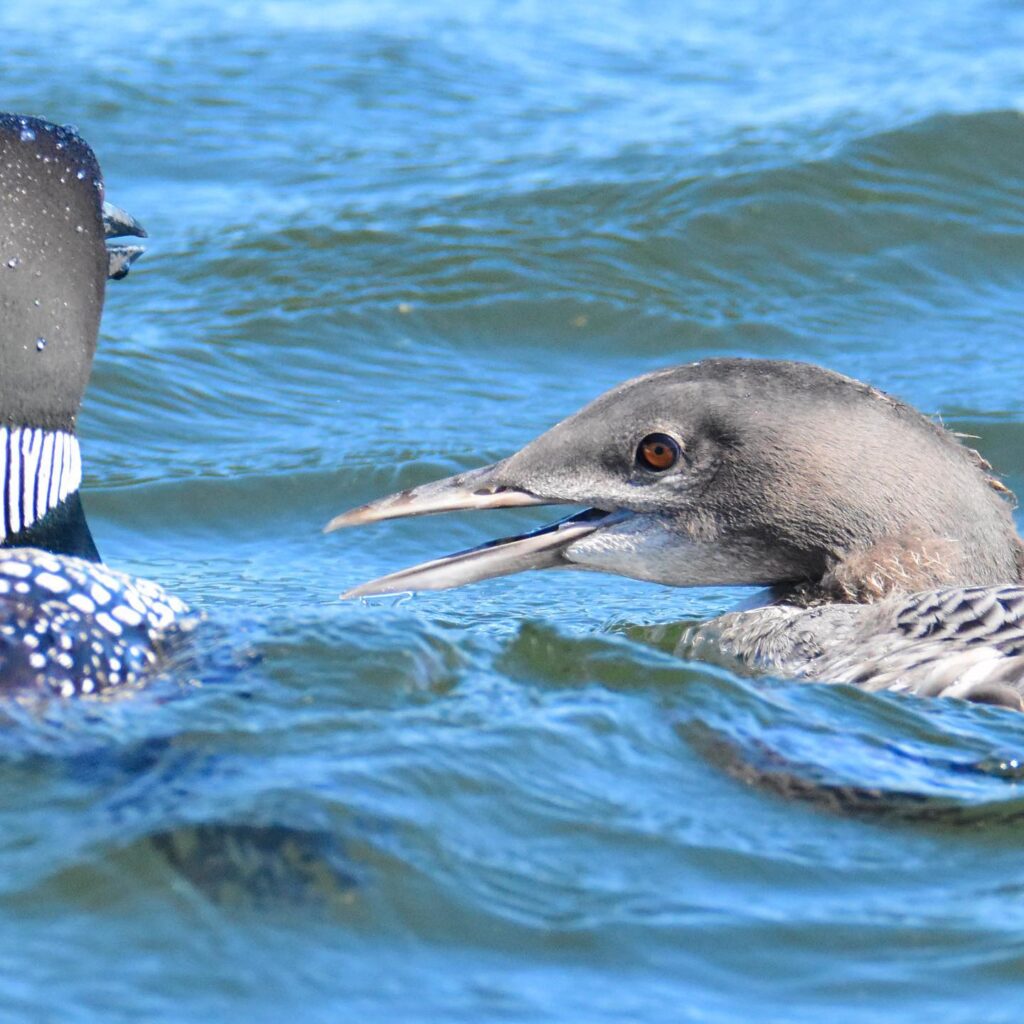
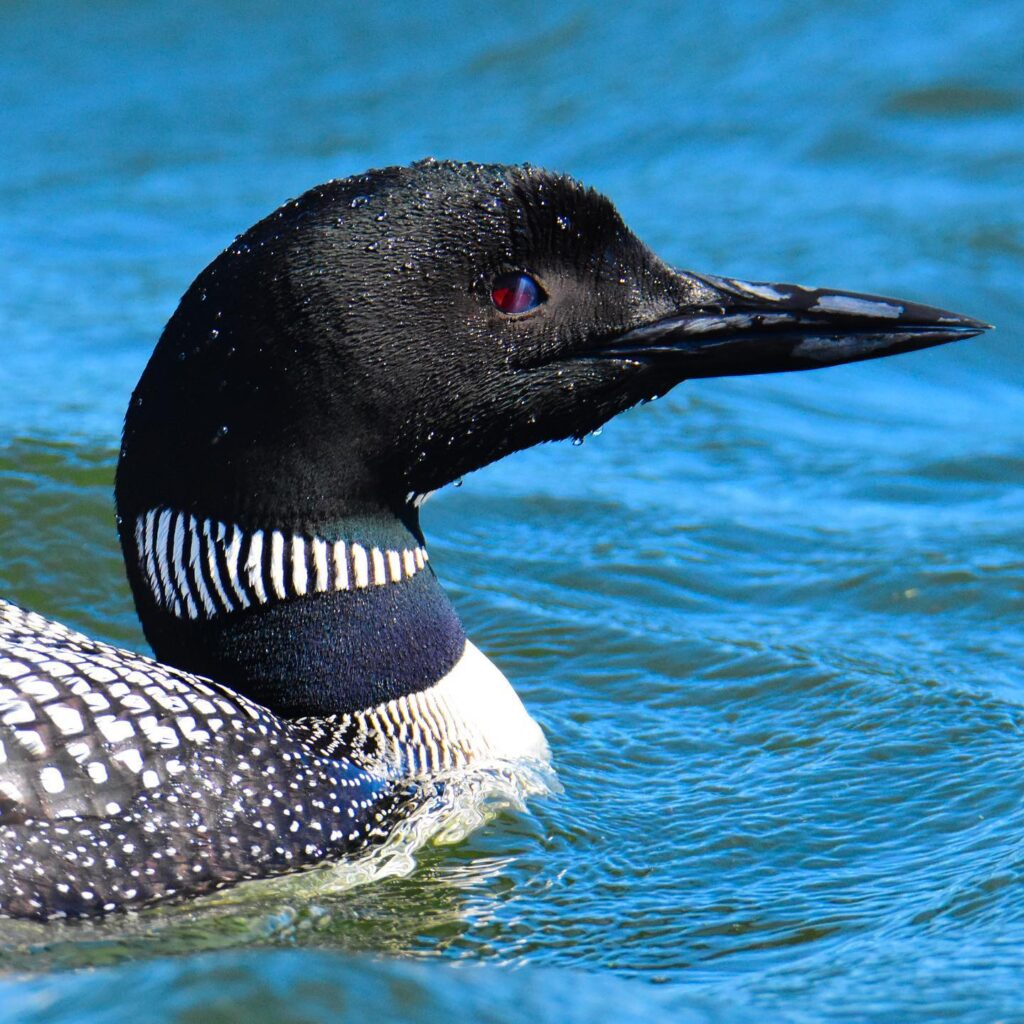

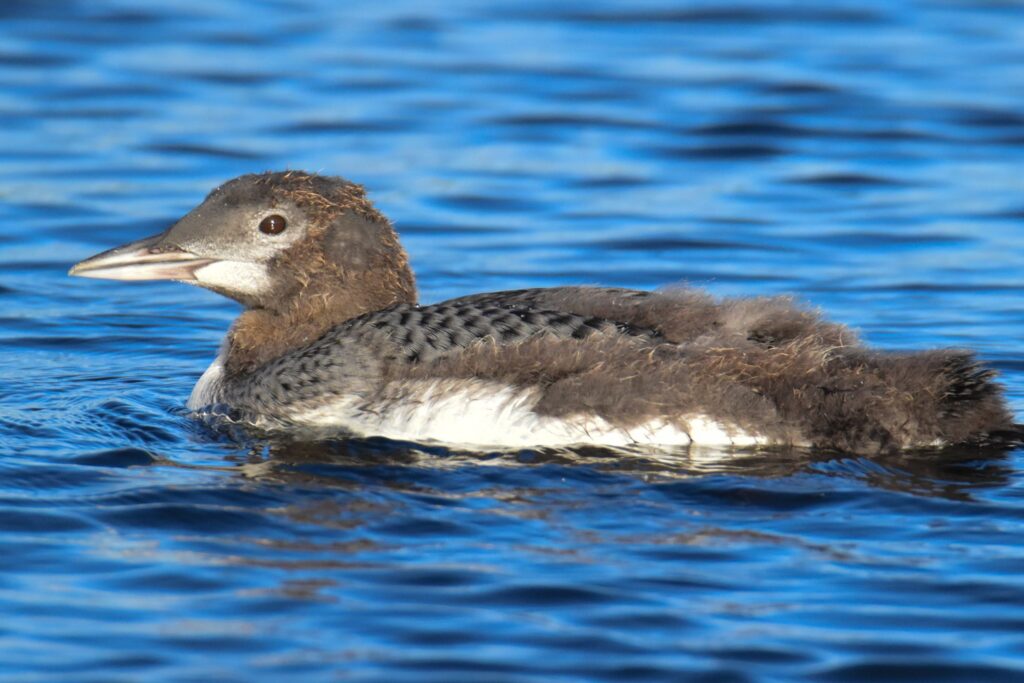
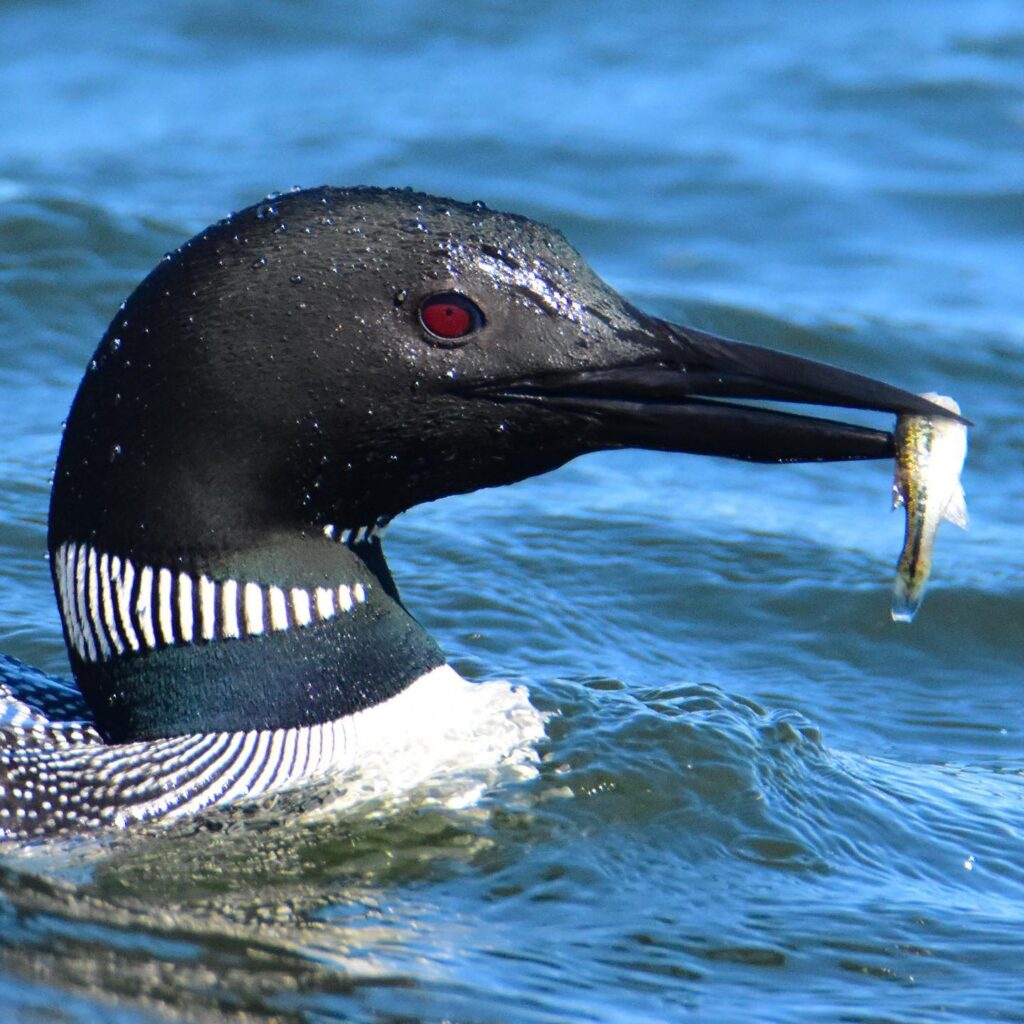
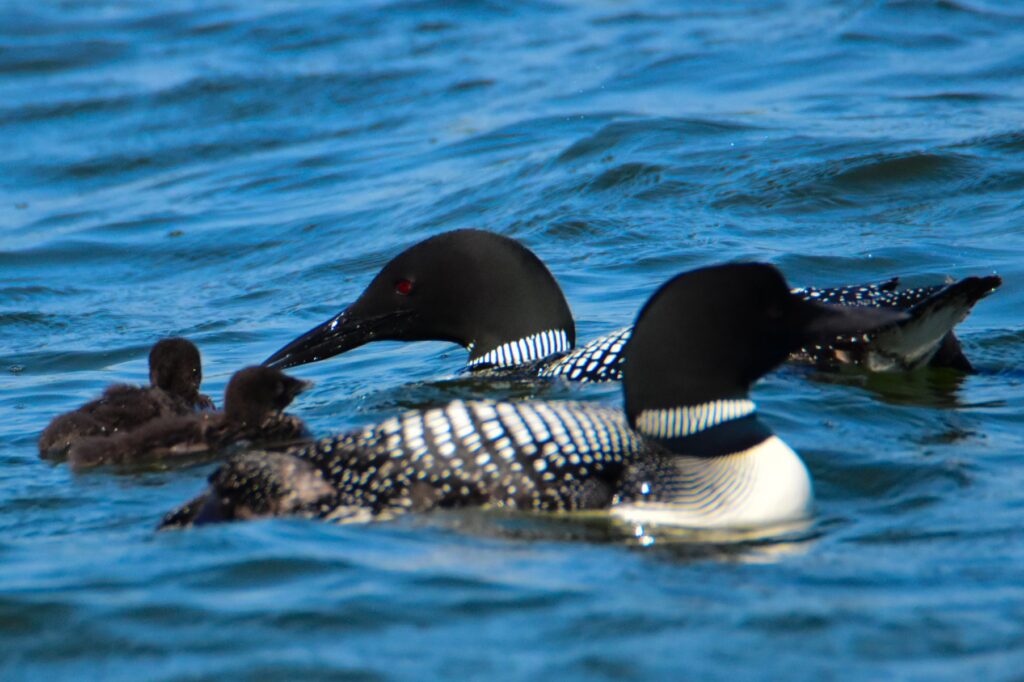
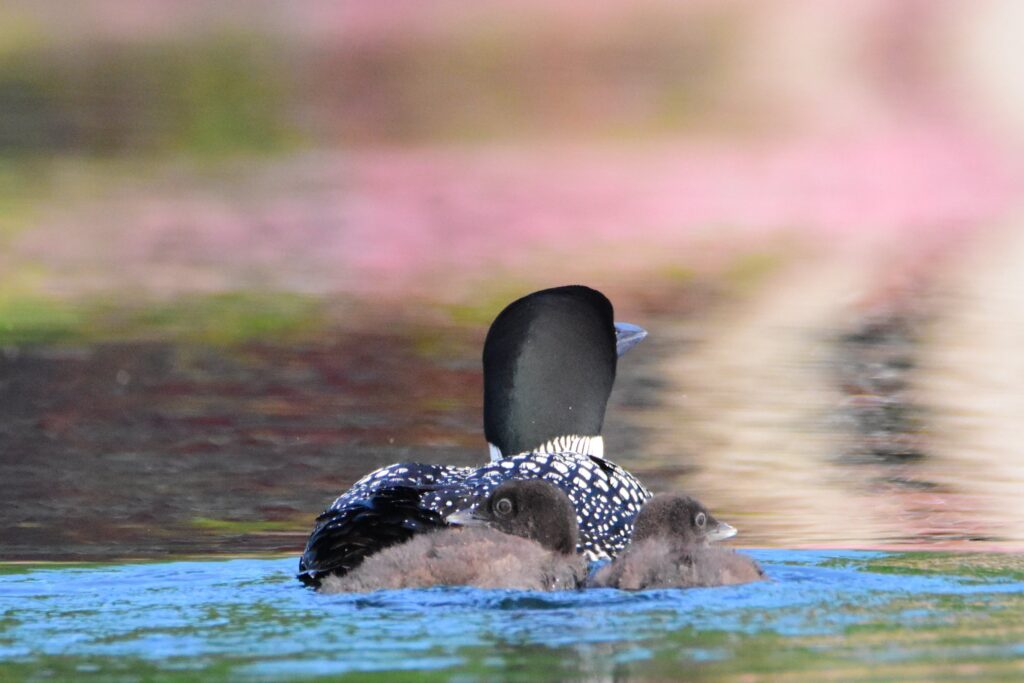
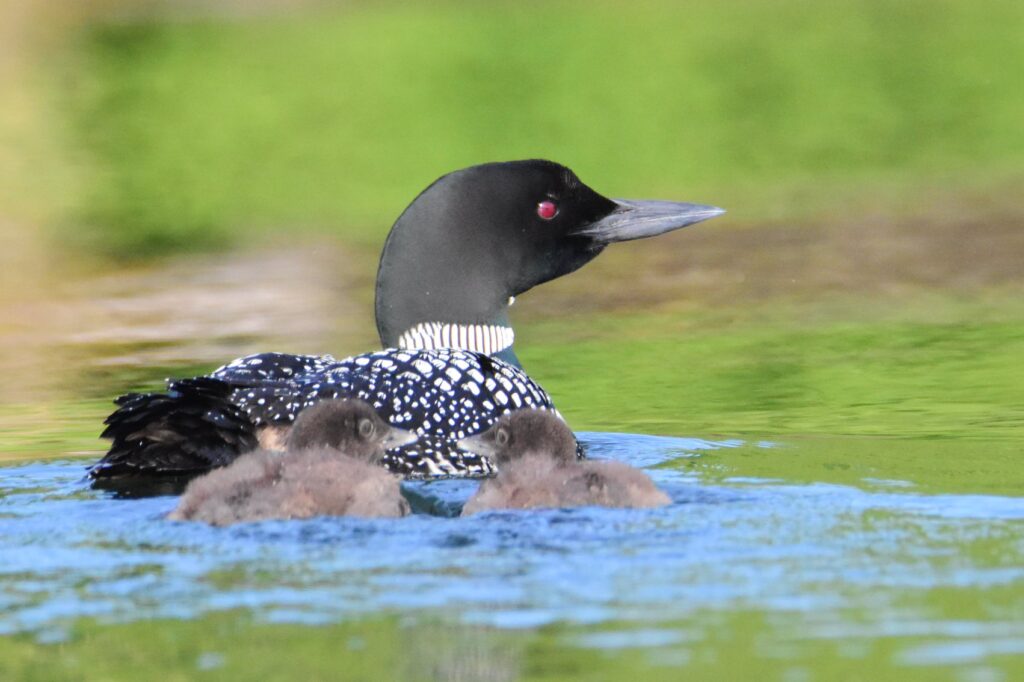
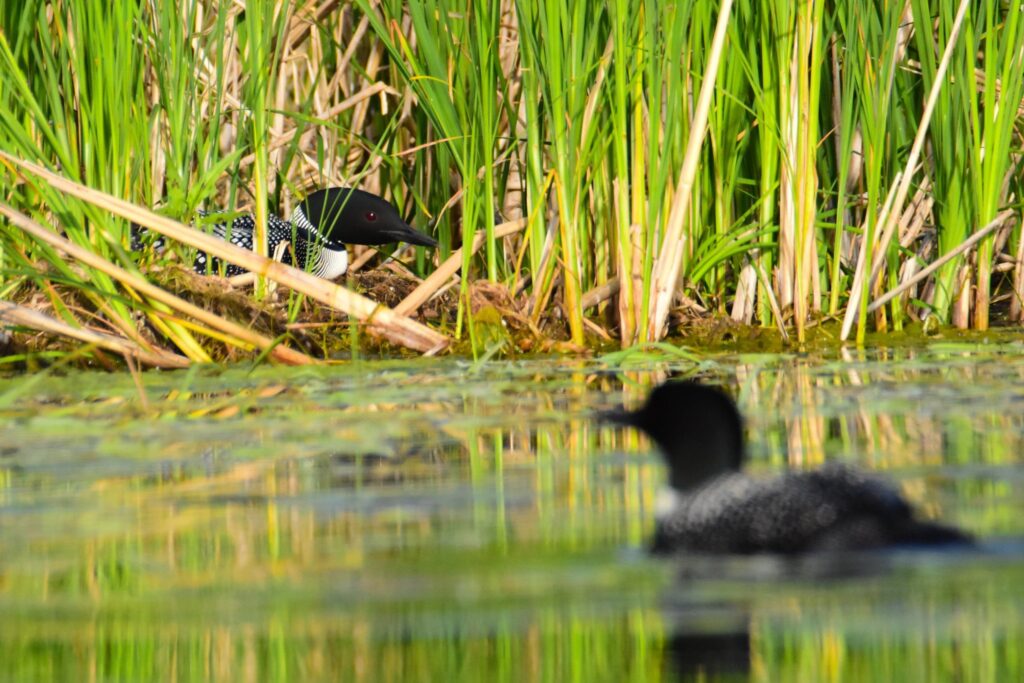
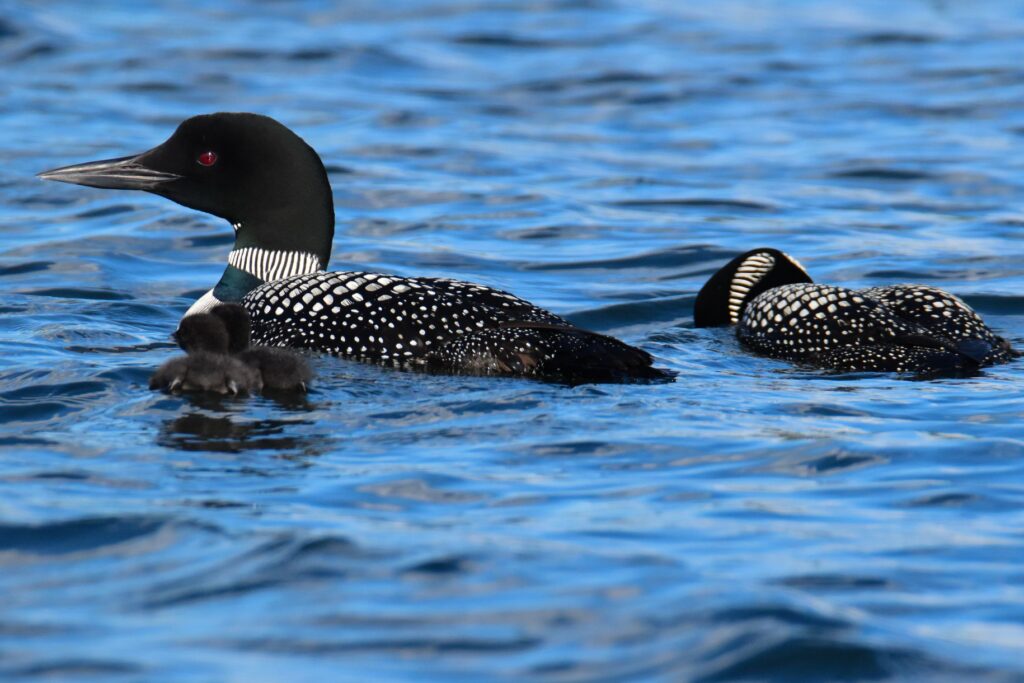
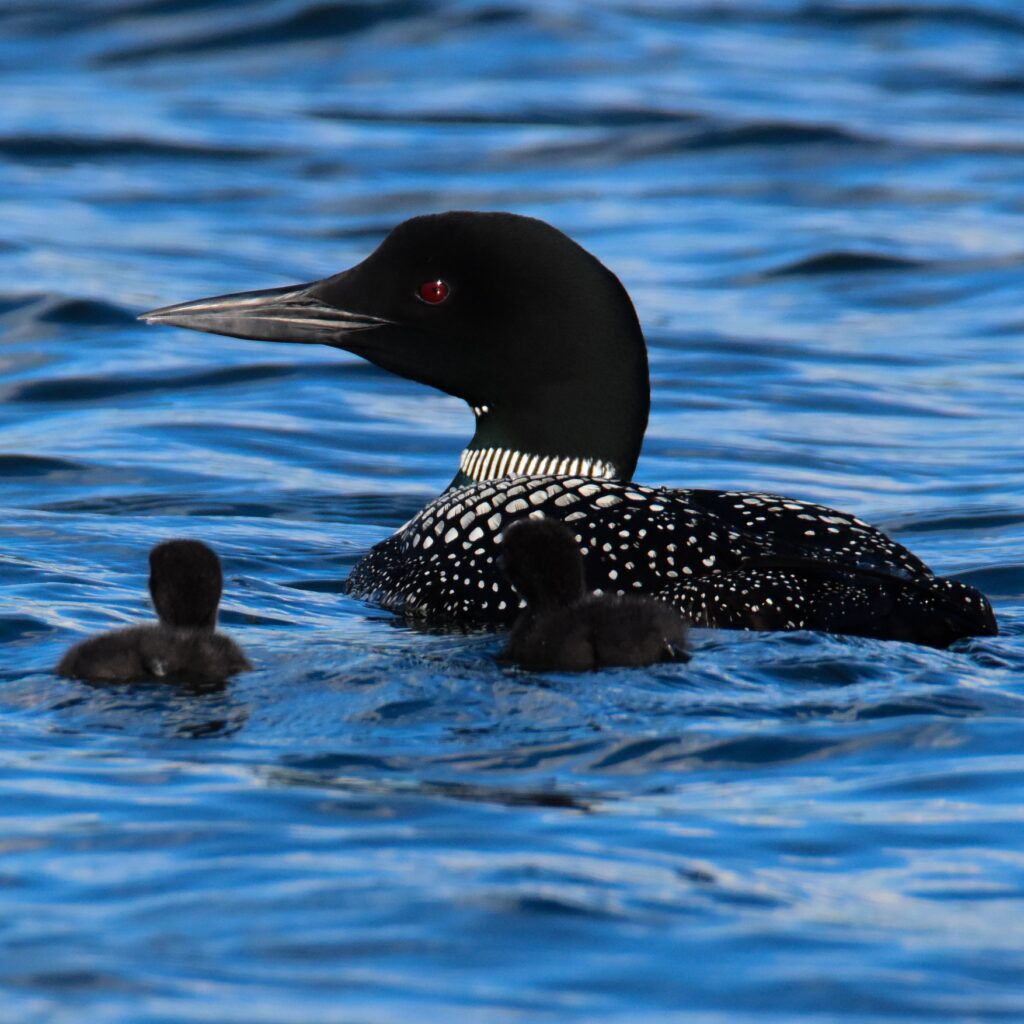
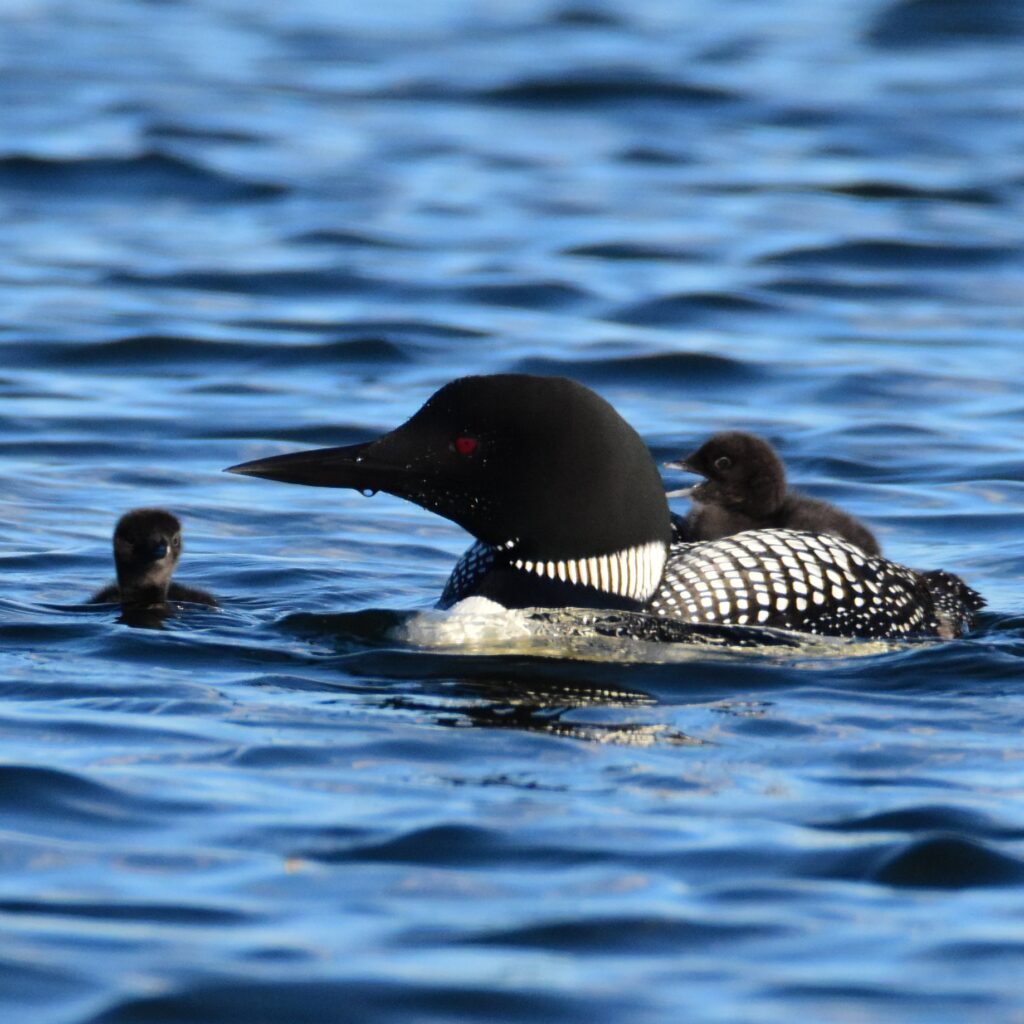
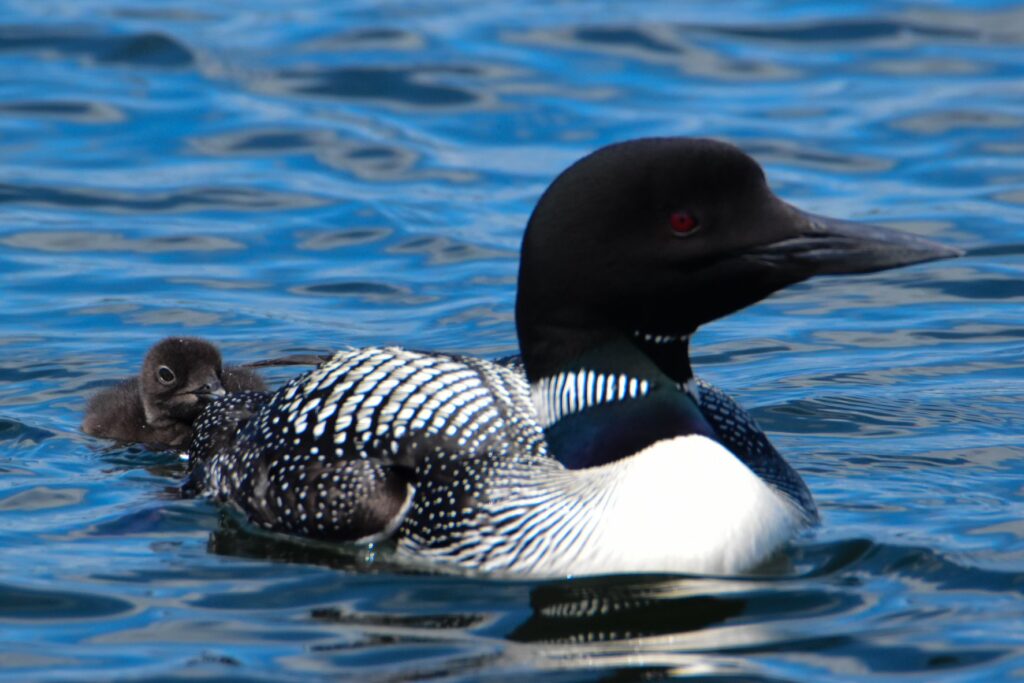
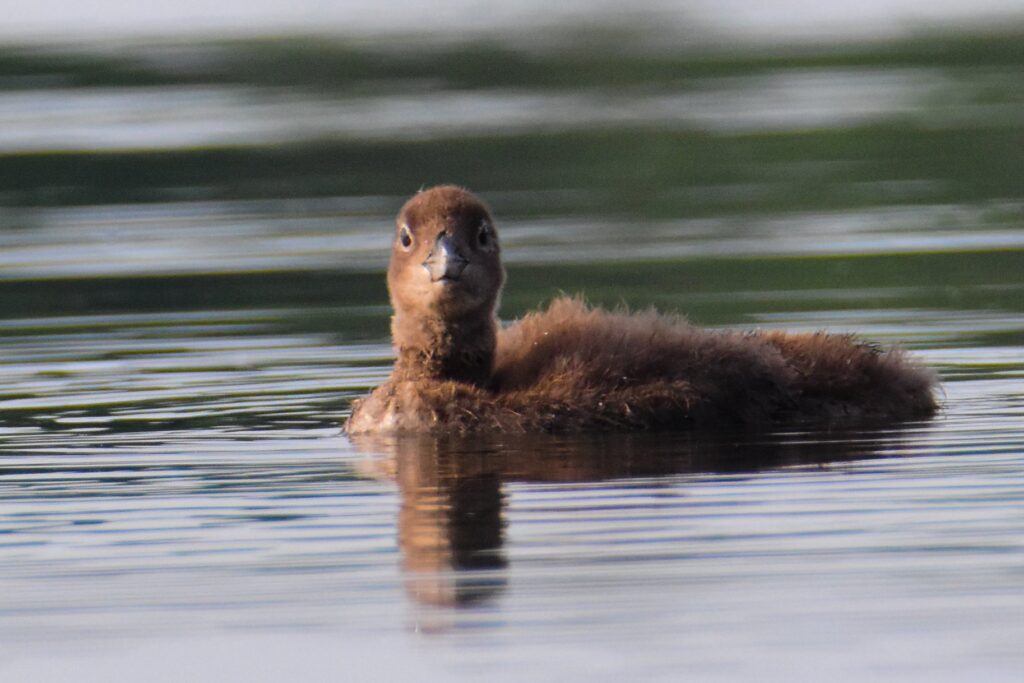
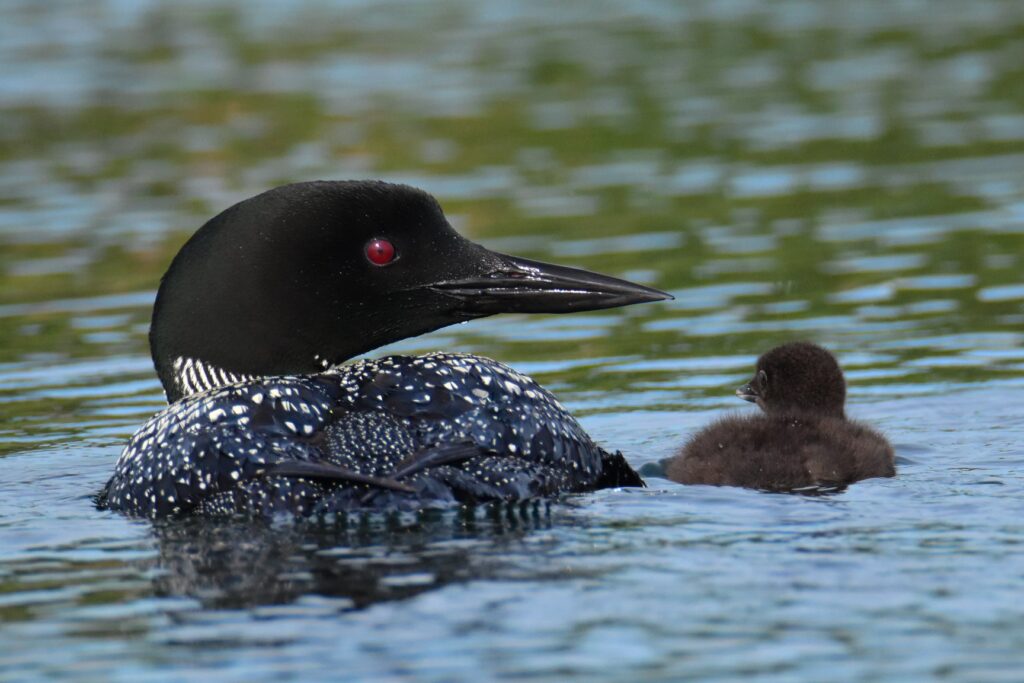


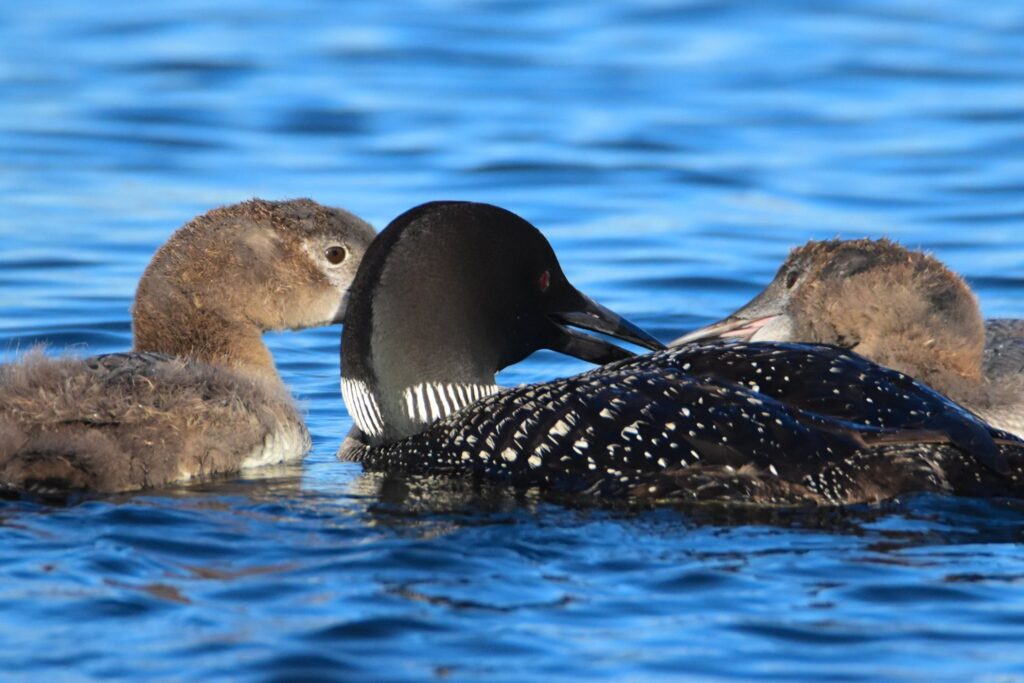
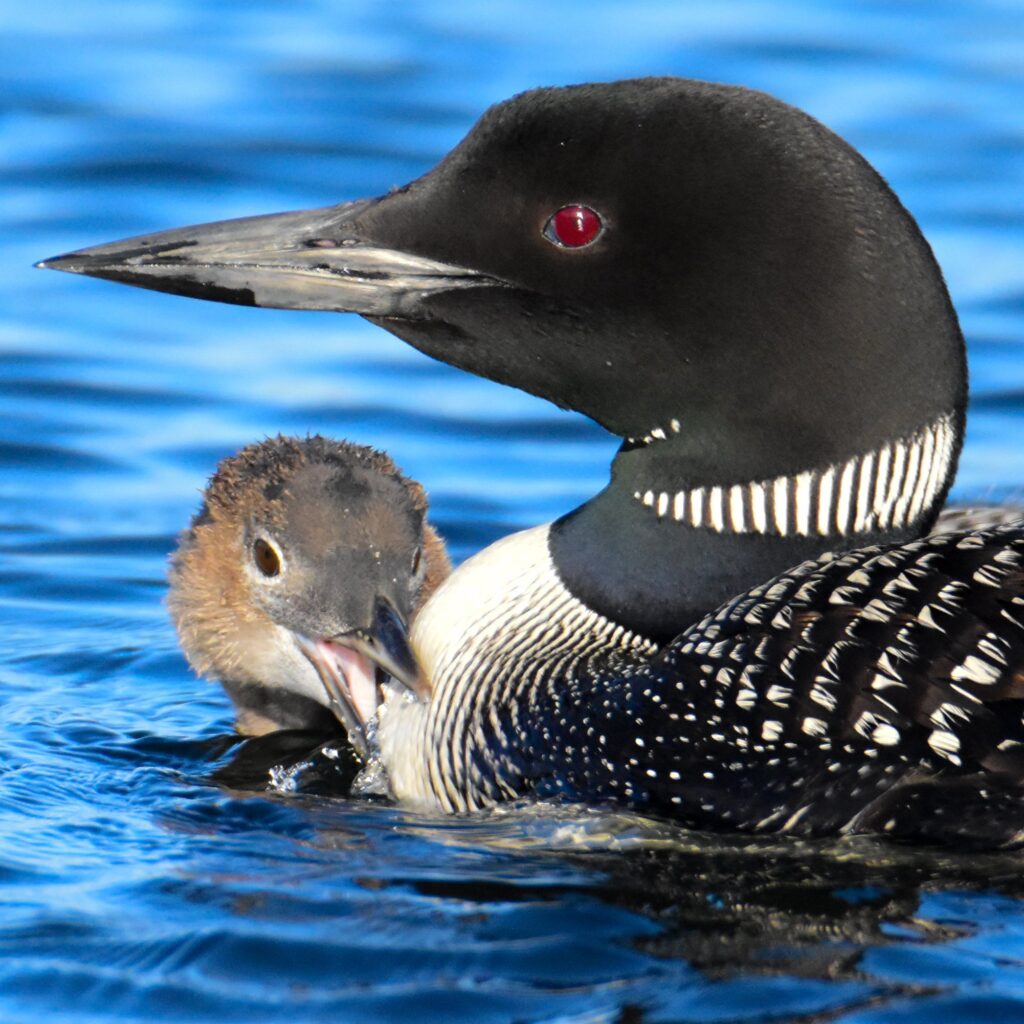
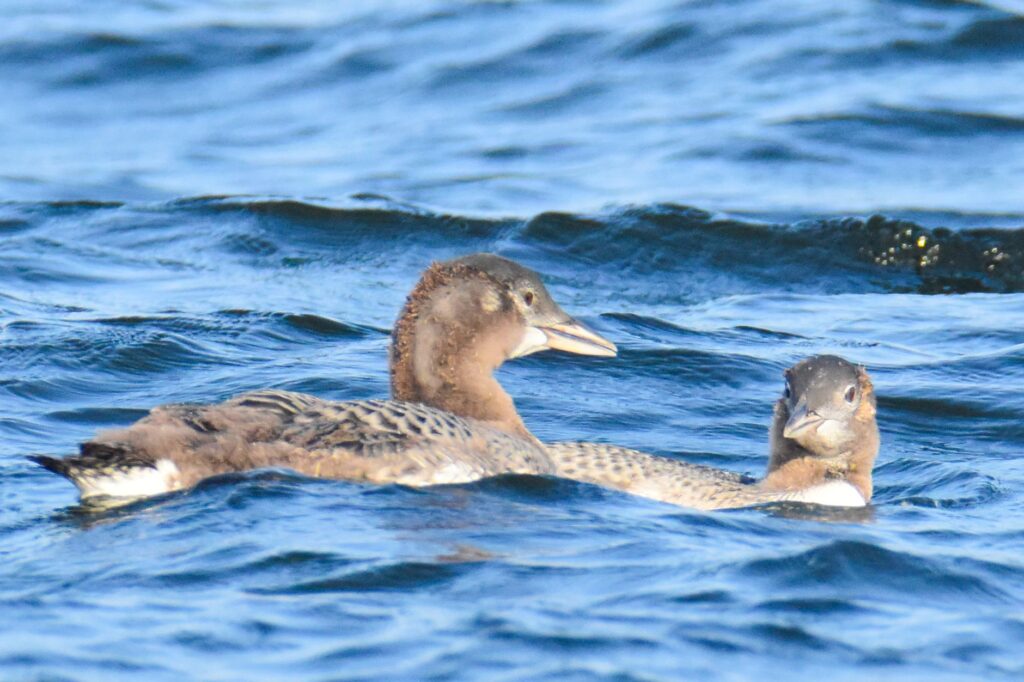
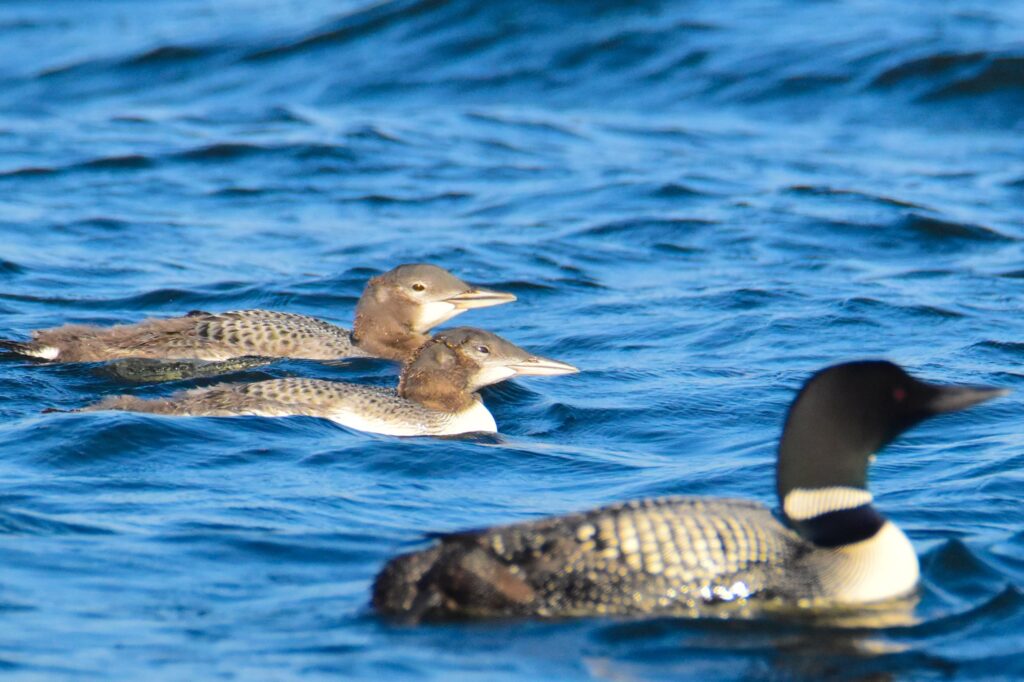
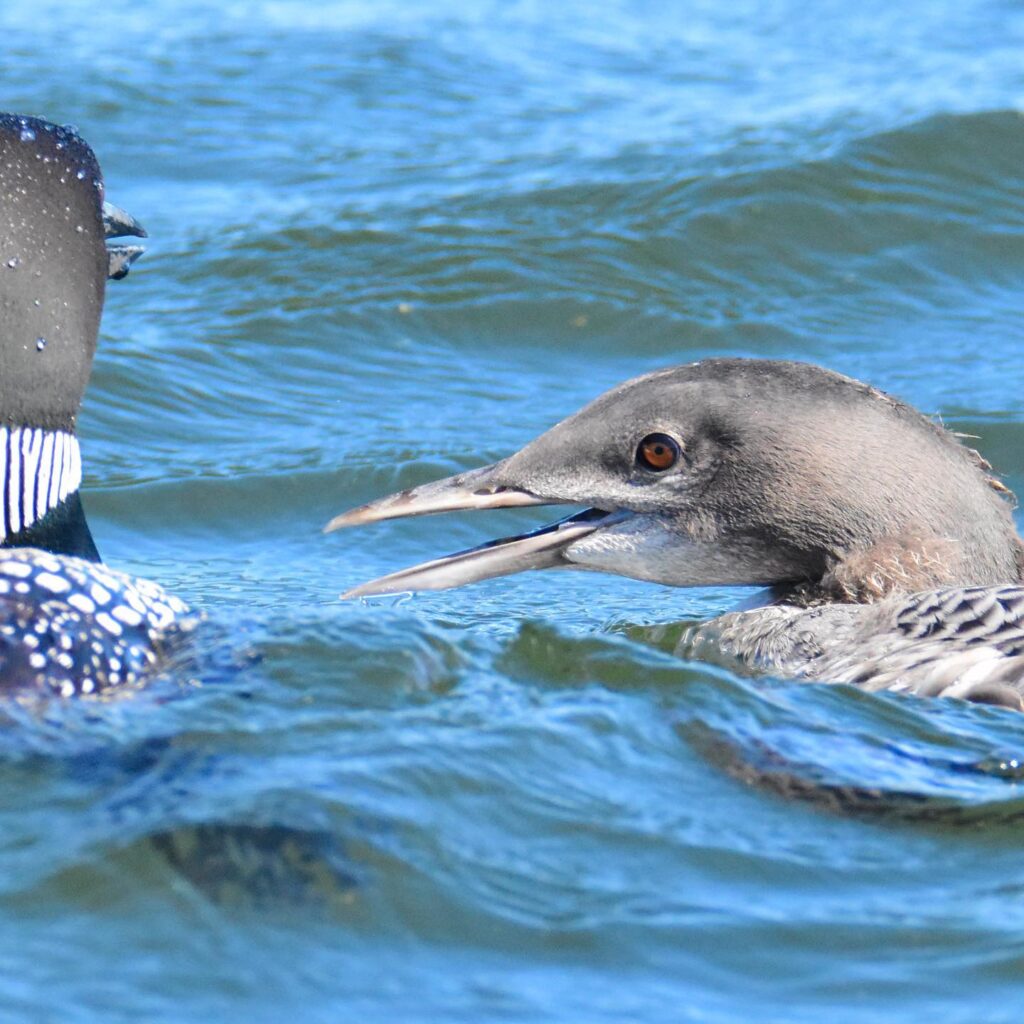
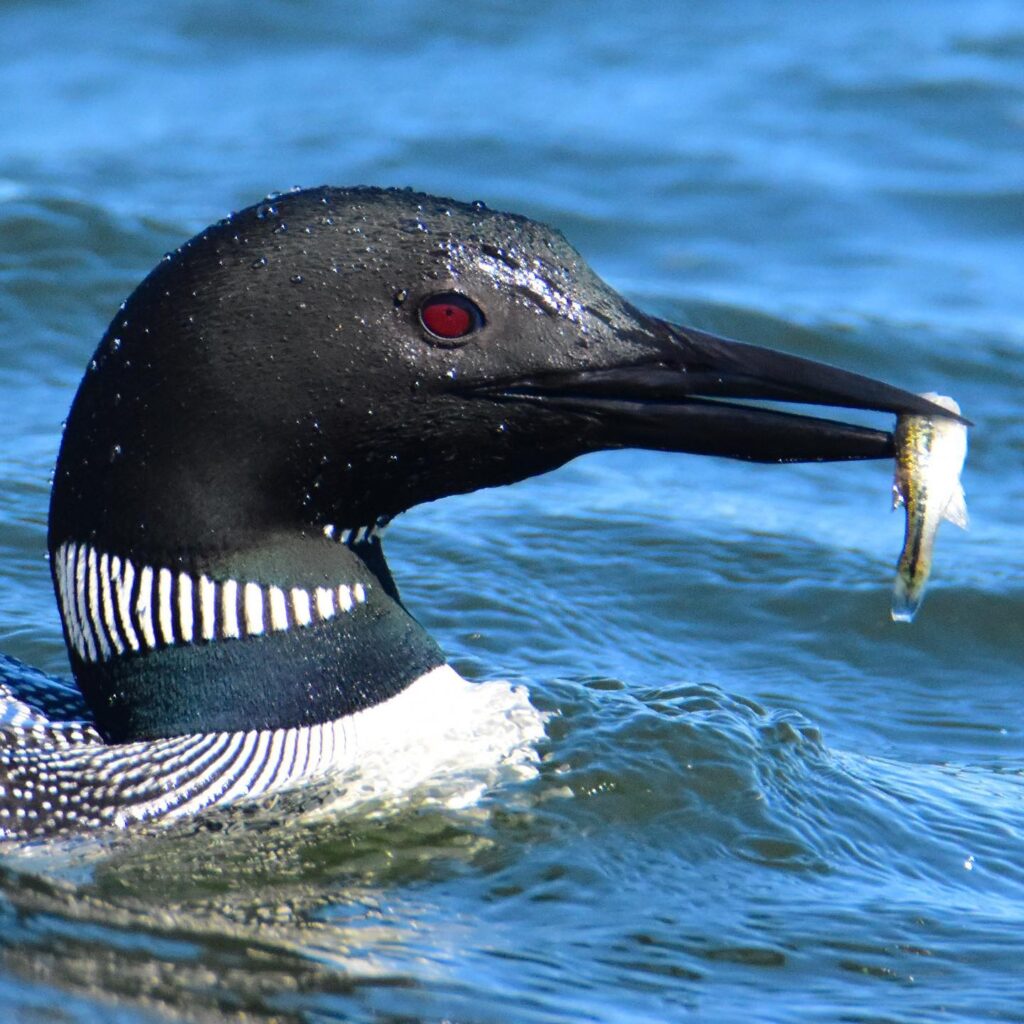
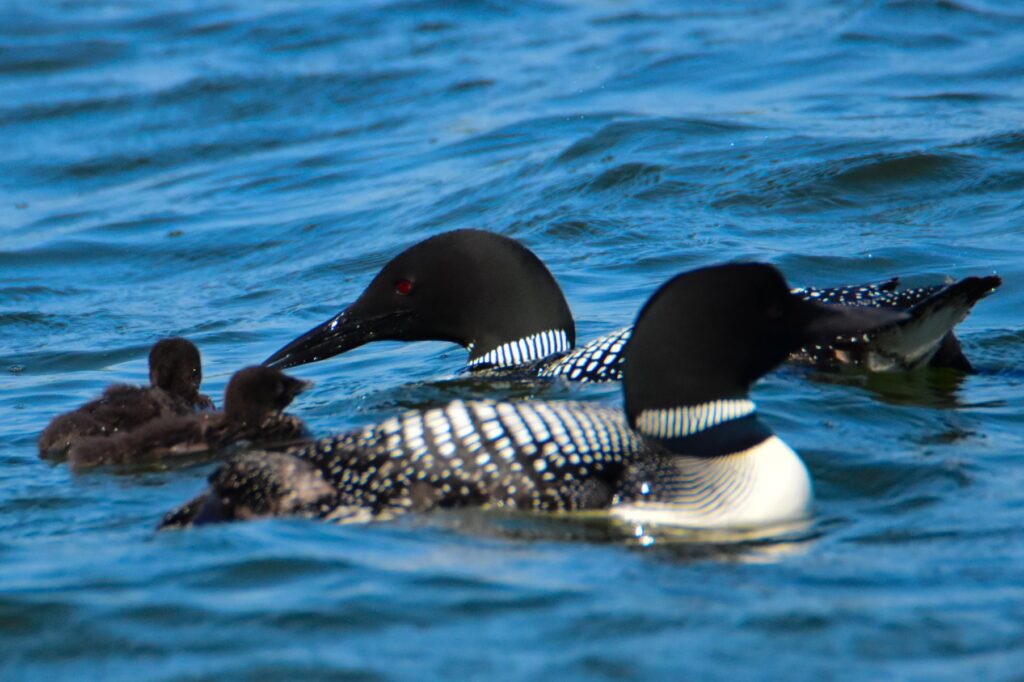
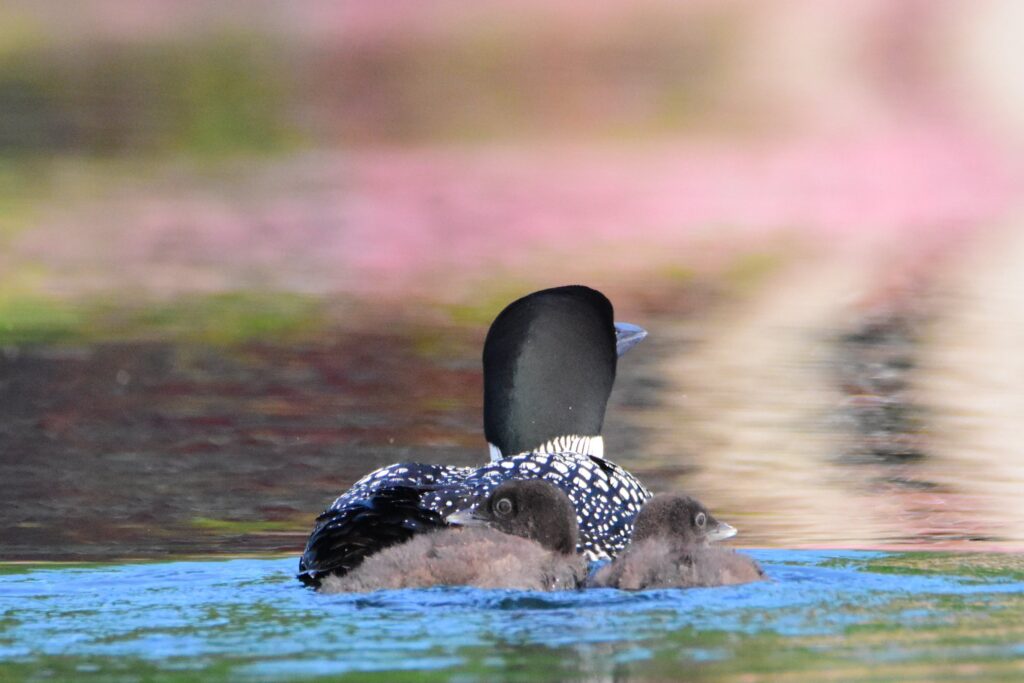
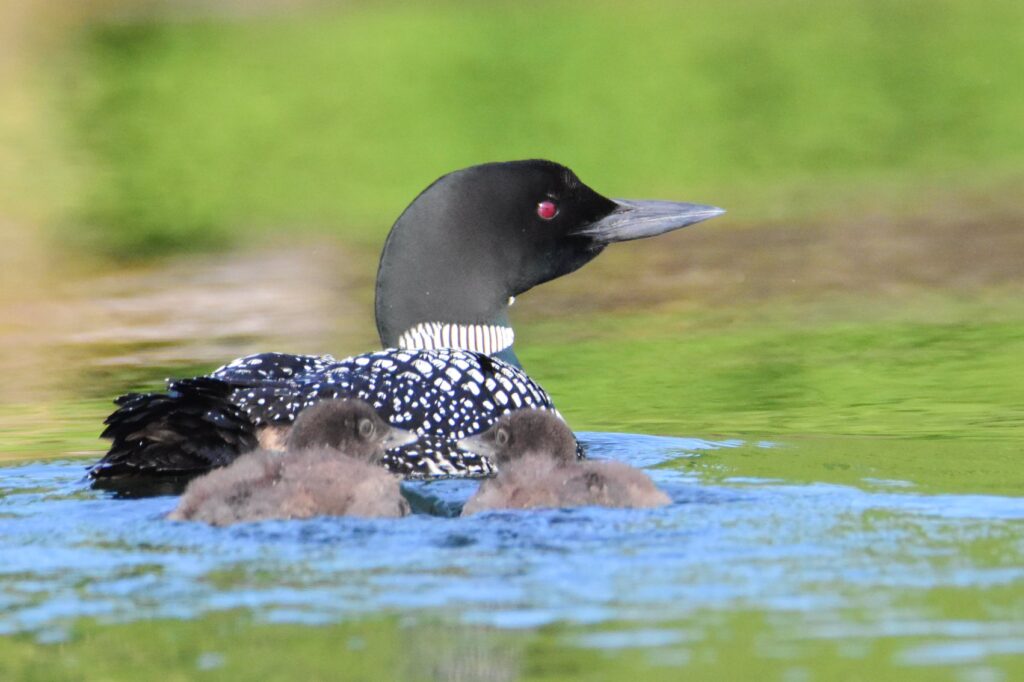
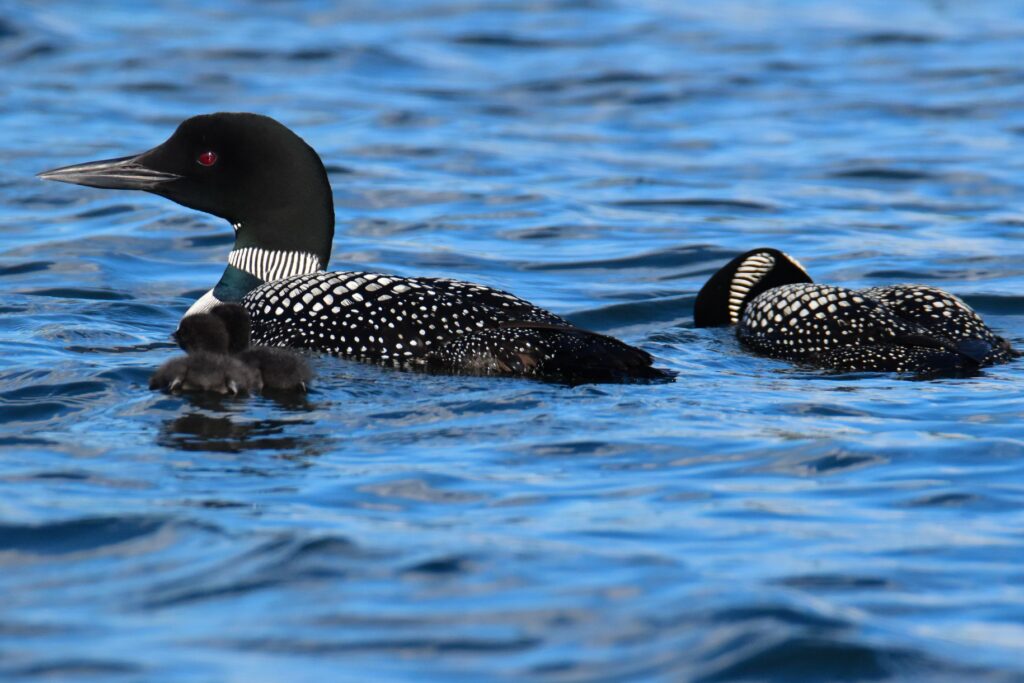
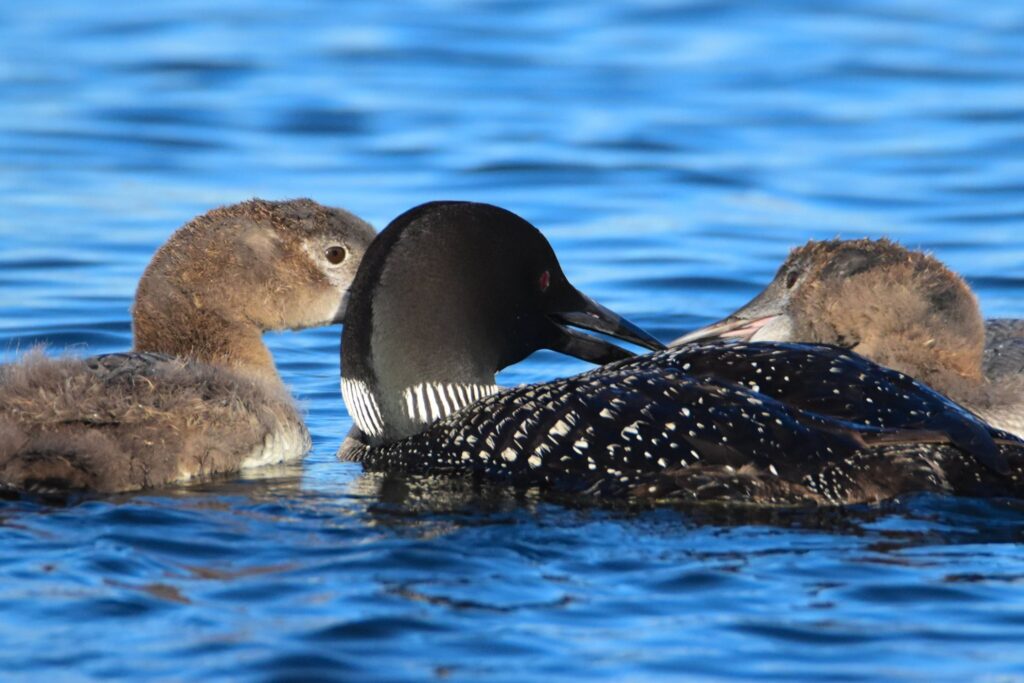
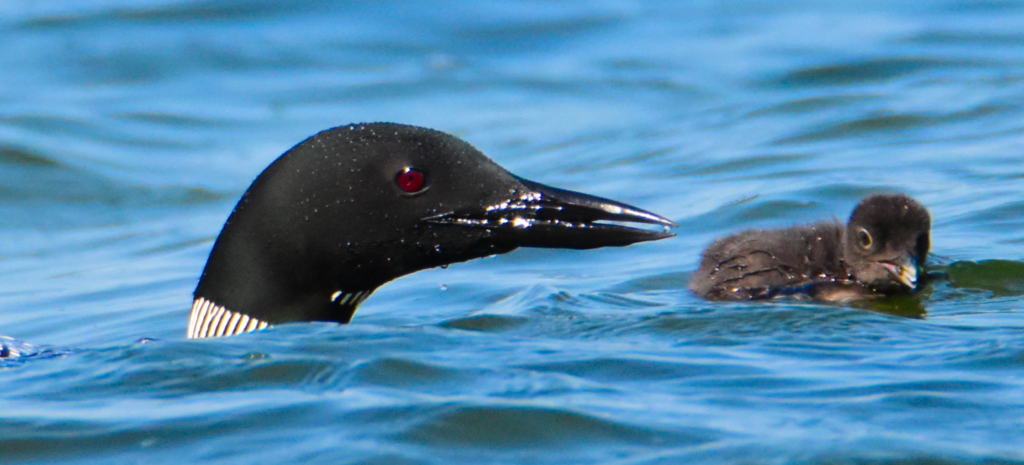
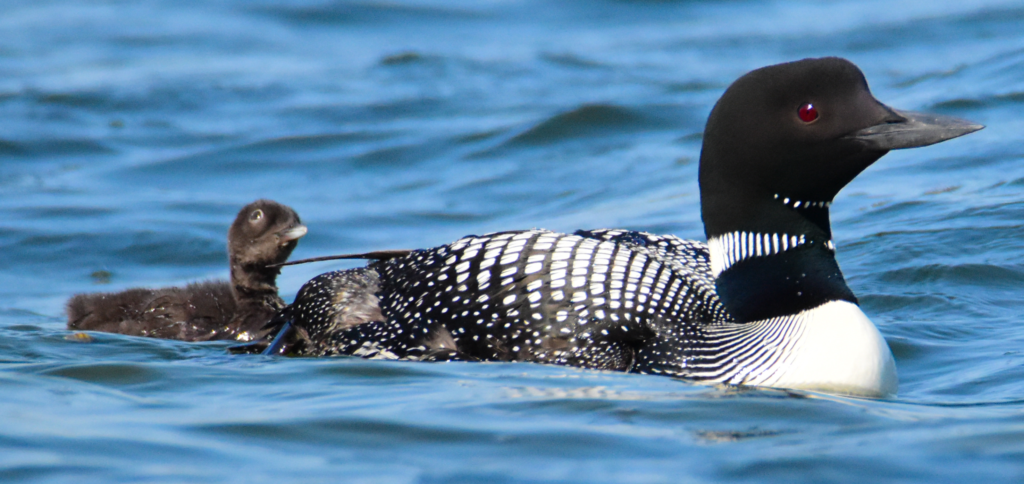
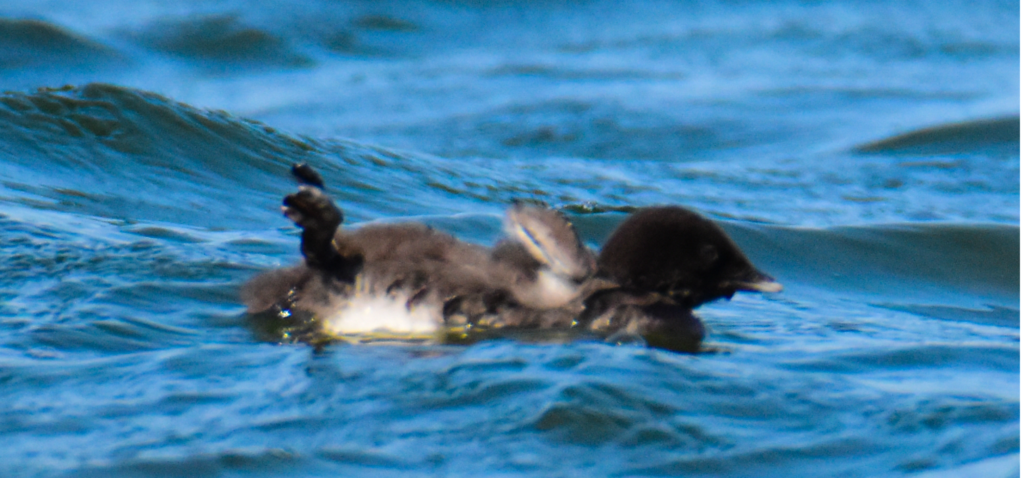
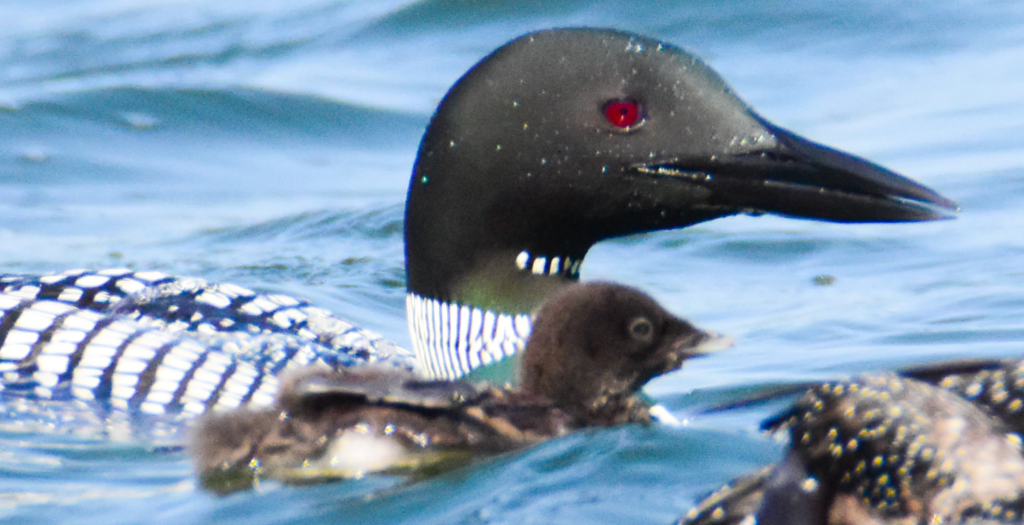

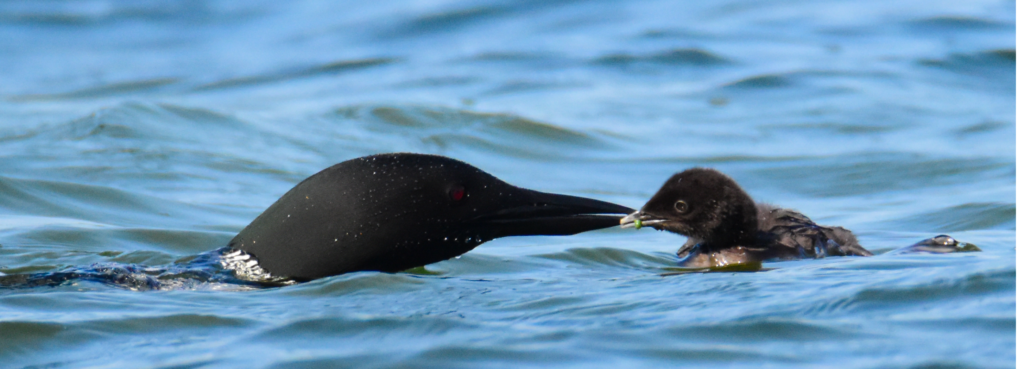
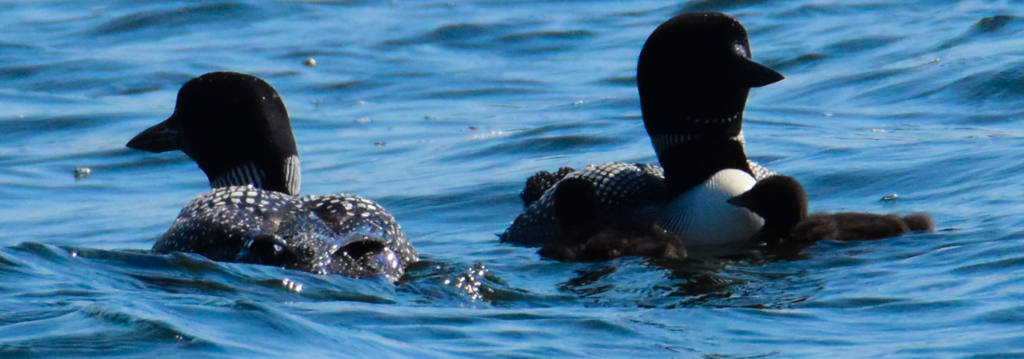
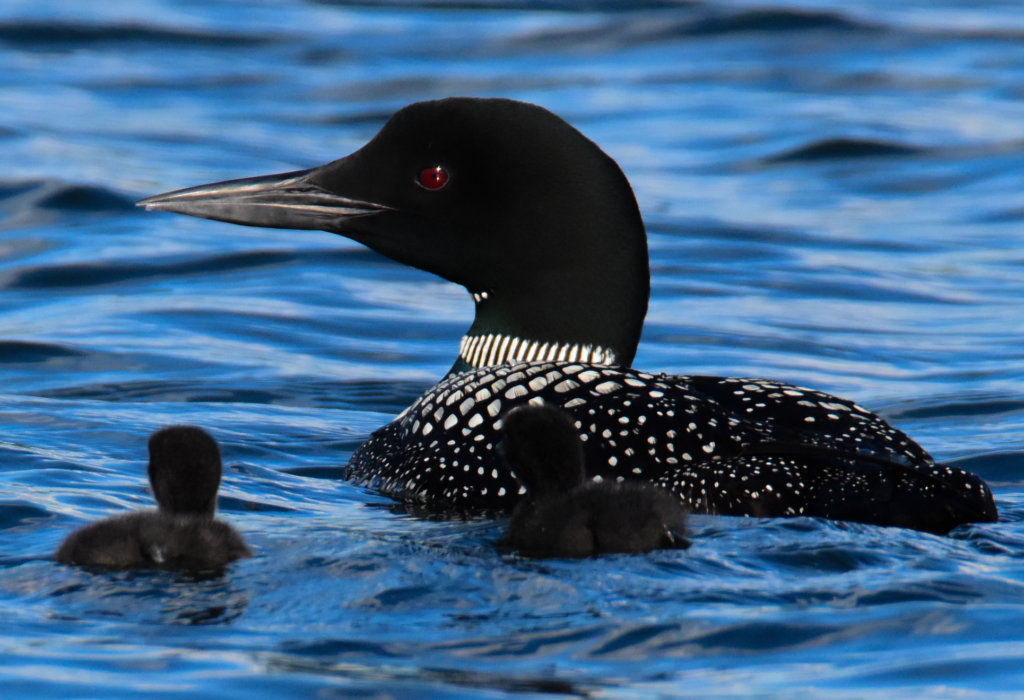
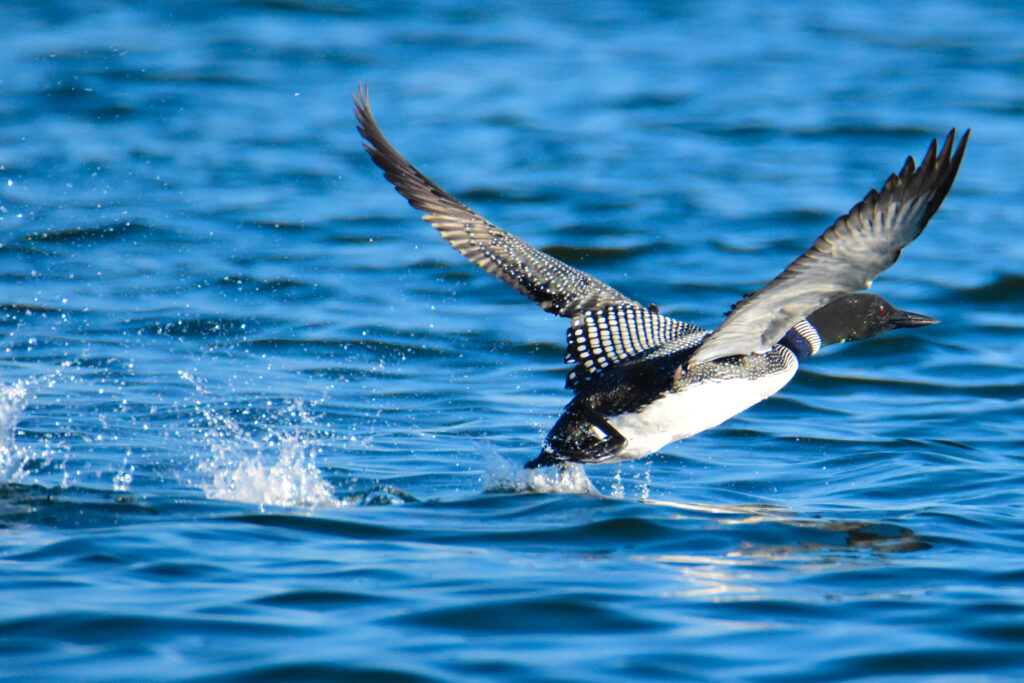
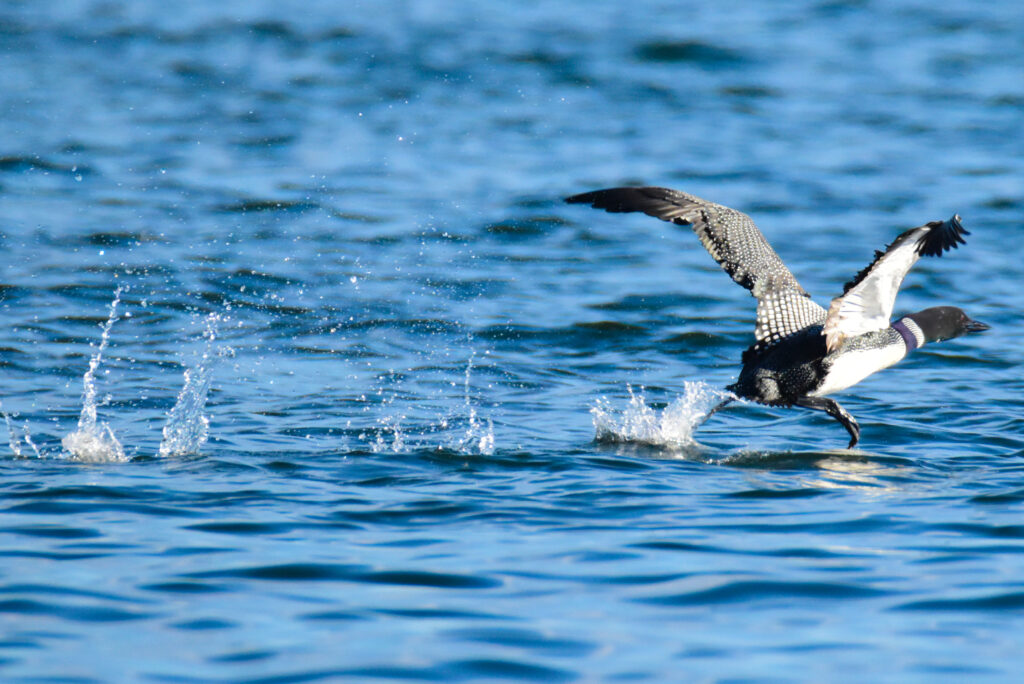
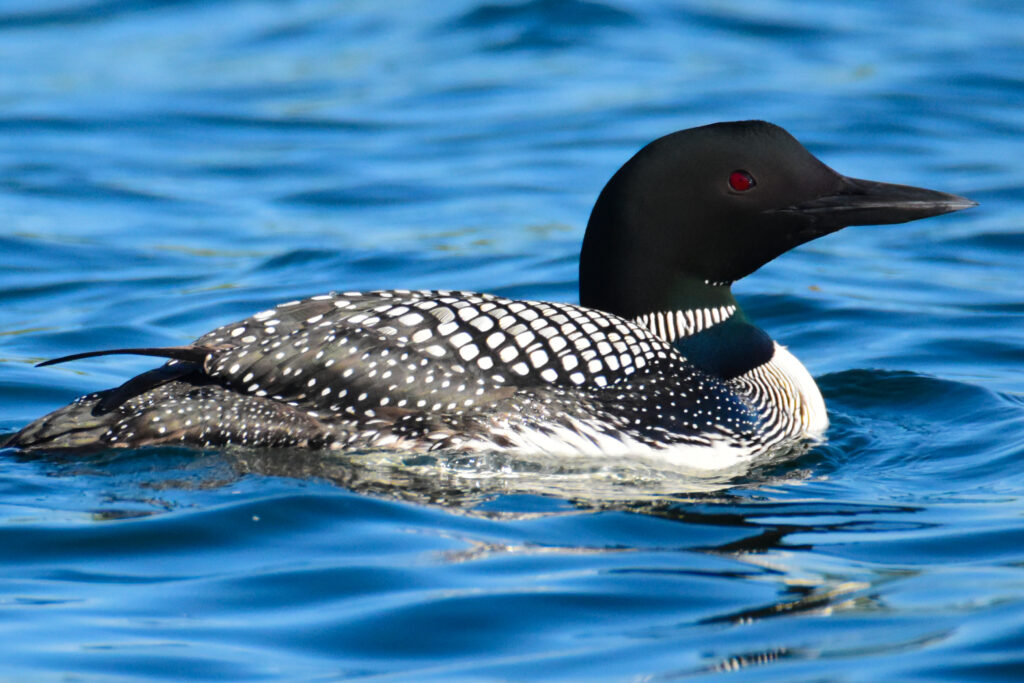


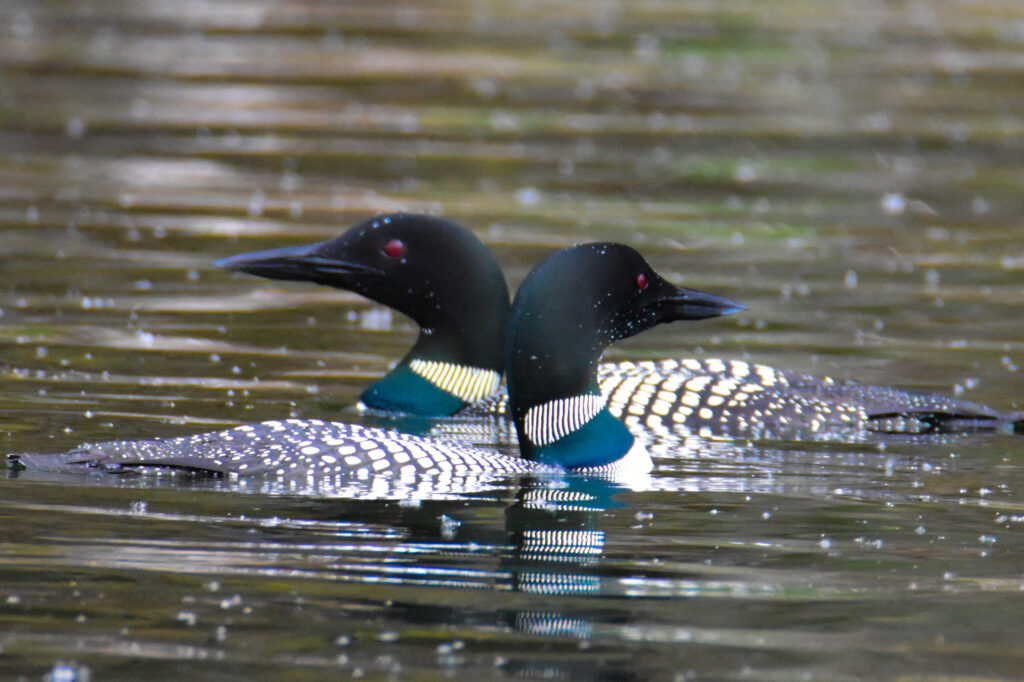
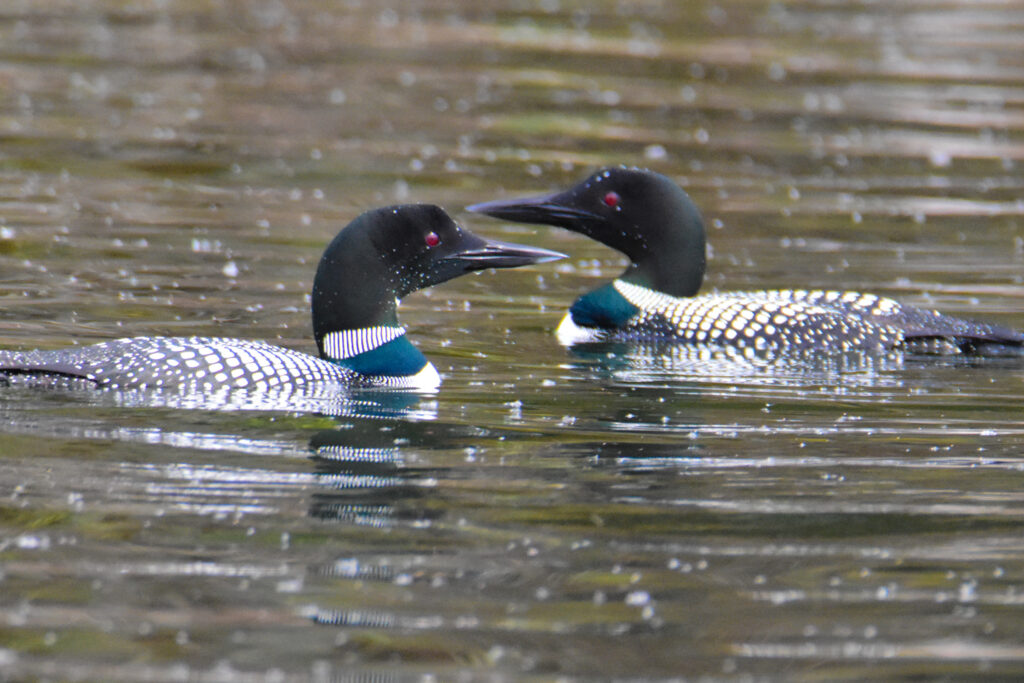
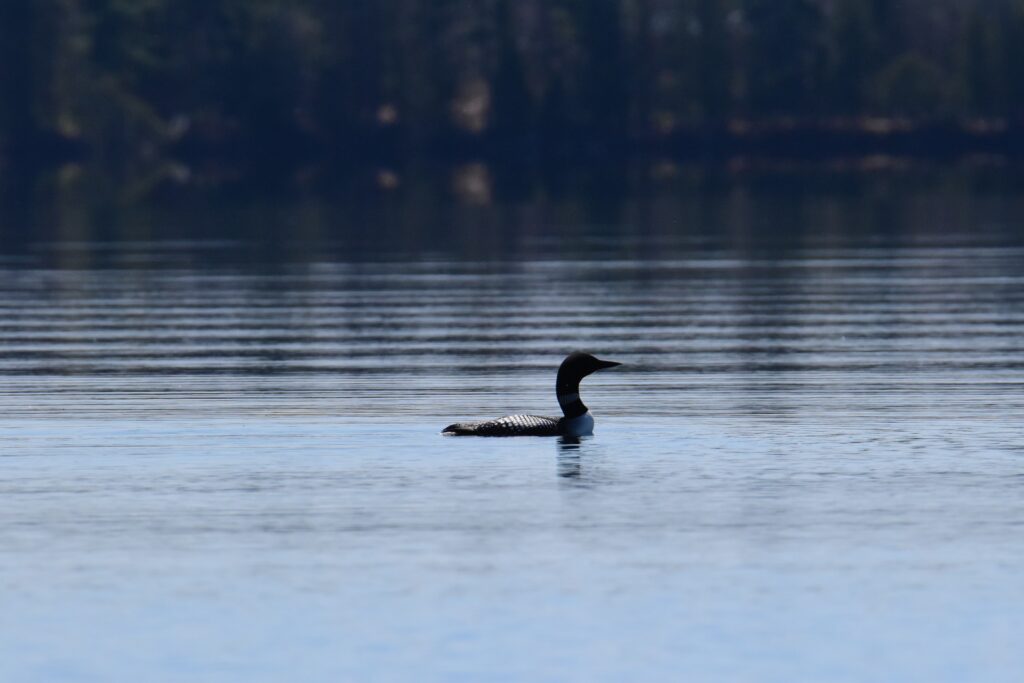
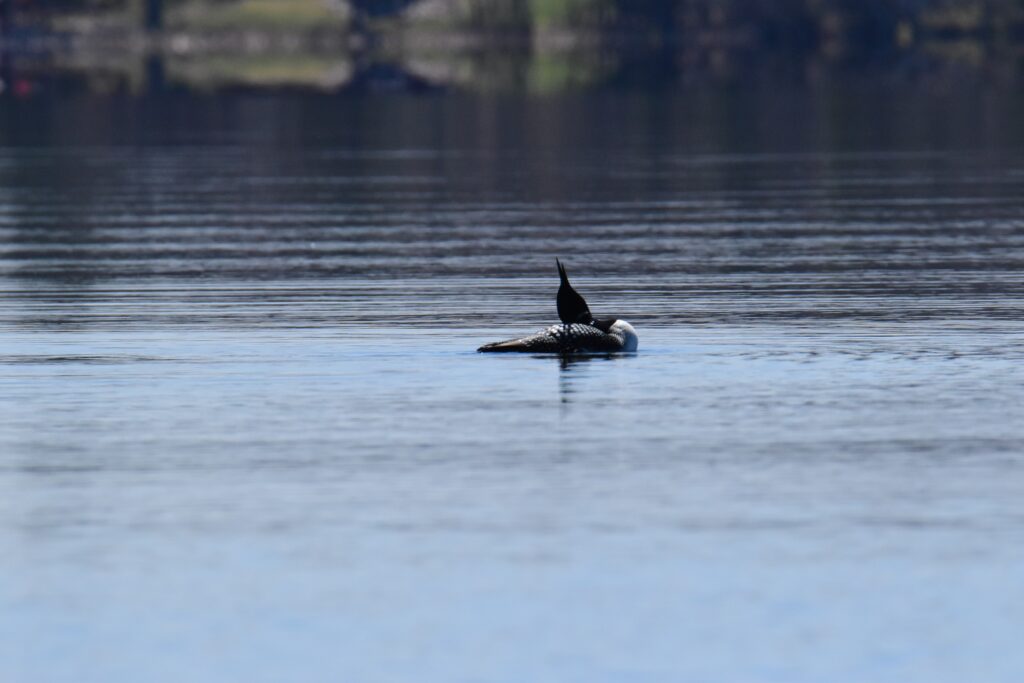
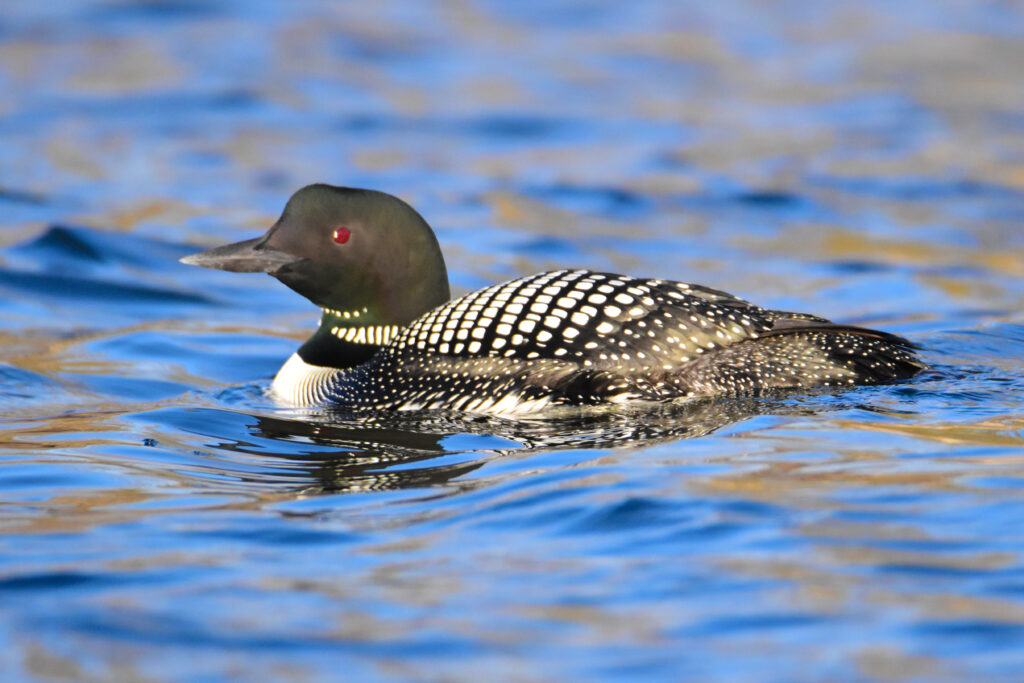
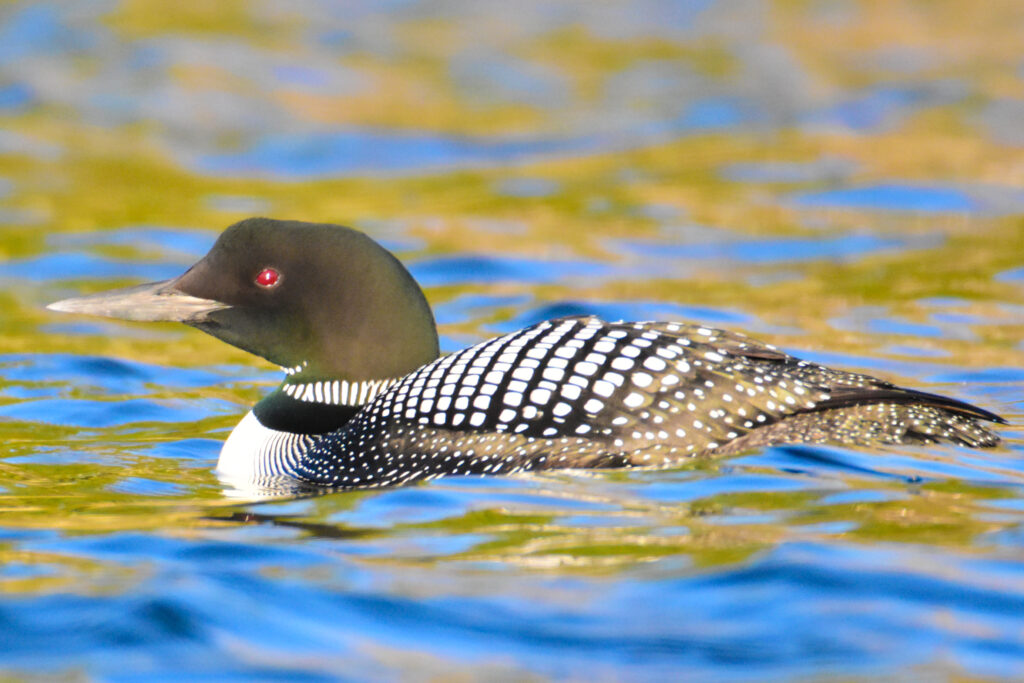


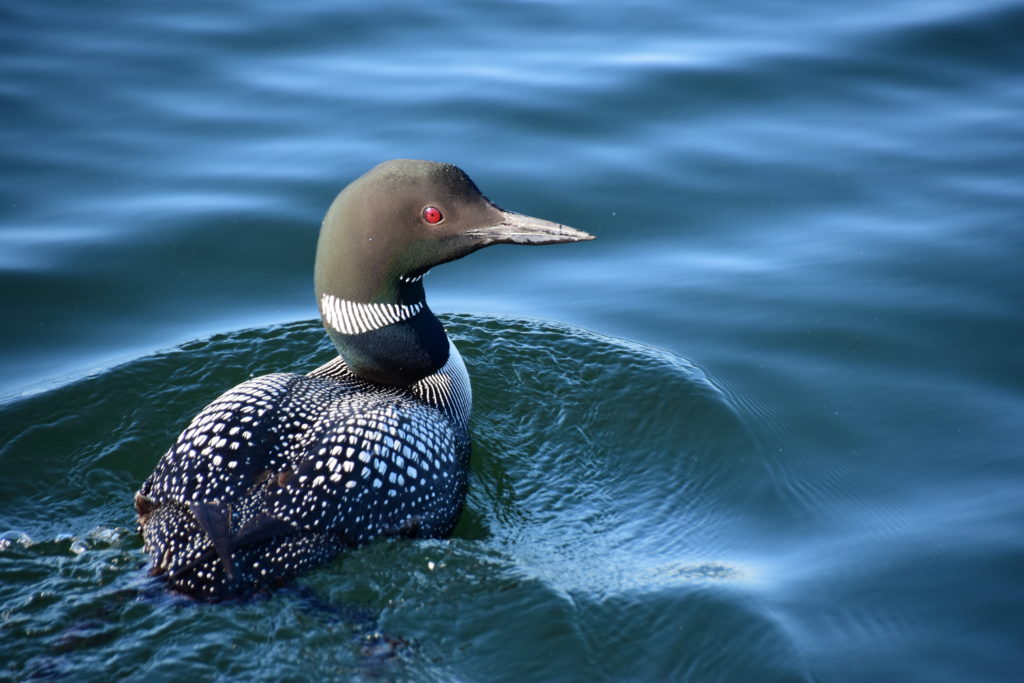
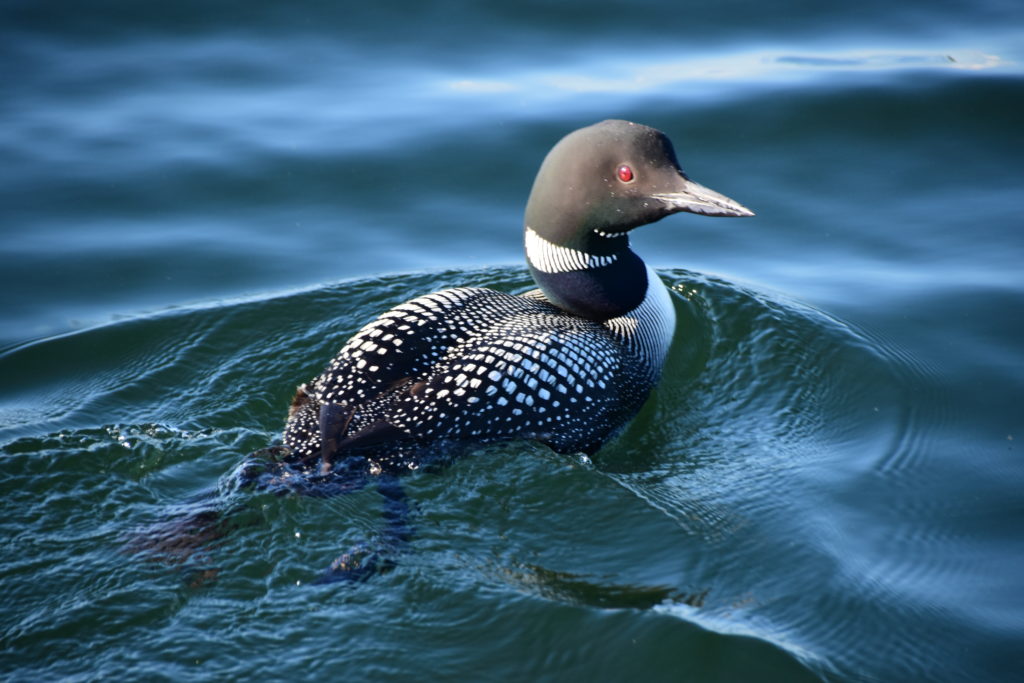
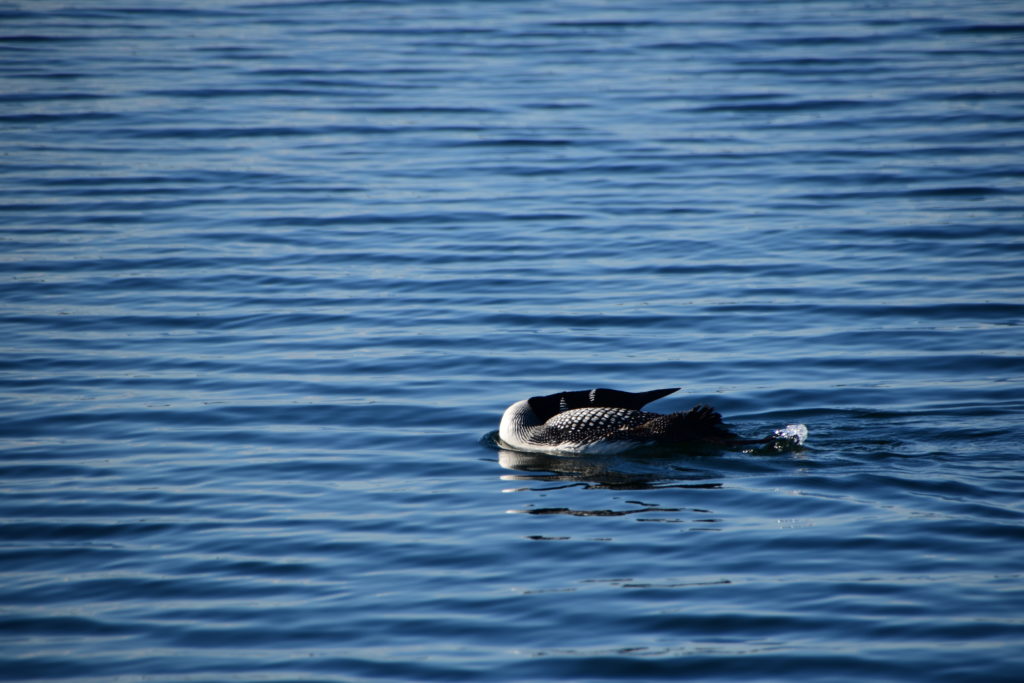

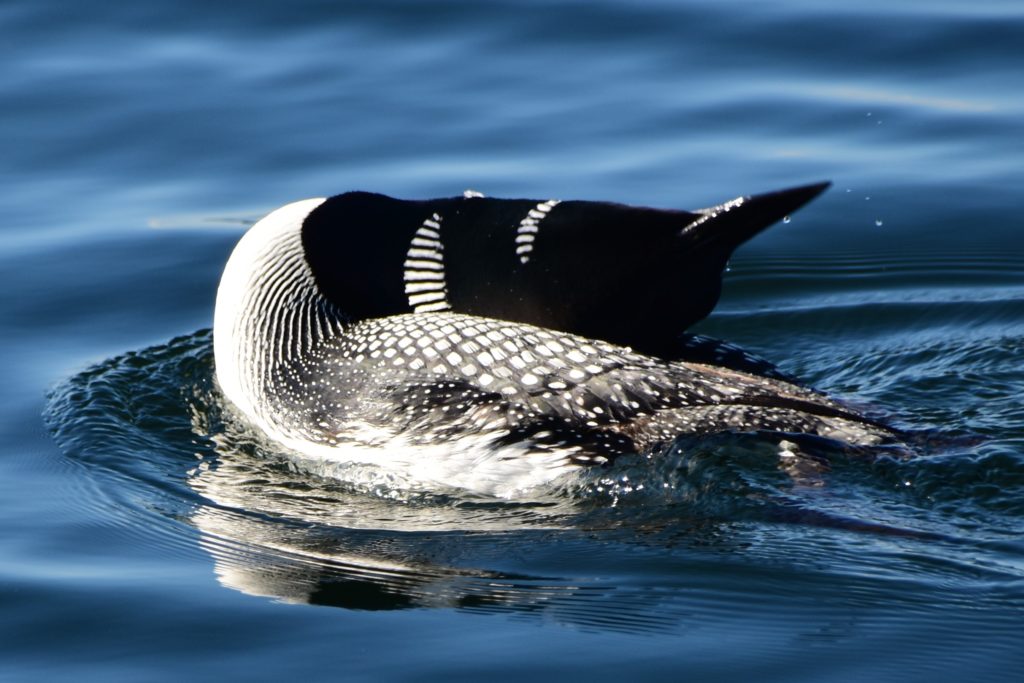
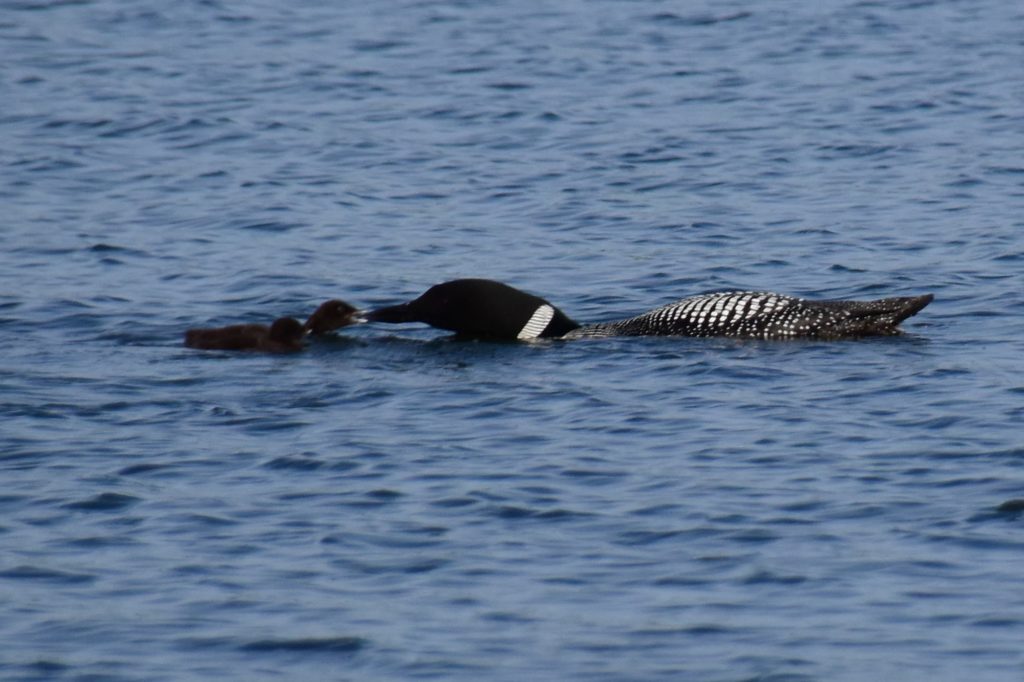
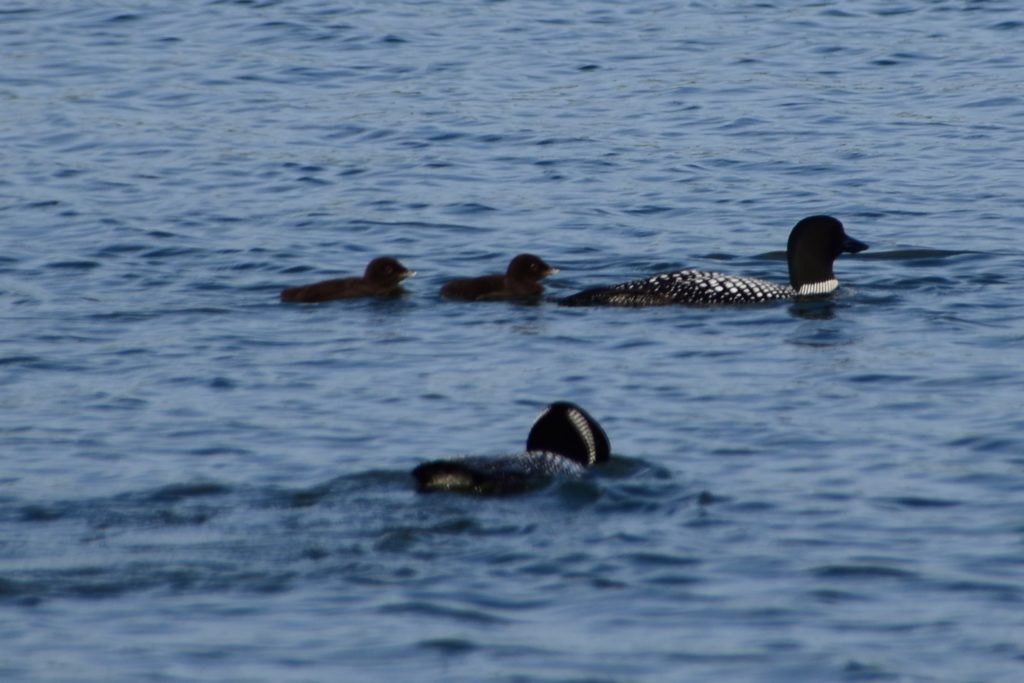

Update on loon nest project and other loon news









































































Adult male loons weigh 7 to 17 pounds, females weigh 5 to 14 pounds. To get airborne requires a decent amount of “runway” water. Take-off requires facing into the wind while flapping and running on the water surface for upwards of 500 feet. The stronger the wind the shorter the distance. Loons have a wing span of 5 feet. And the body length of 3 feet.
During the summer adult loons gather in small groups of up to 20 or more adults. Social time can go on for an hour or more. Once social time concludes loon pairs peel away and take off, heading back to their own lakes
Near the end of the summer you will see that the adults have left. And only the young ones, now full sized are left swimming on the lake by themselves. Winter is fast approaching and the young have no choice but learn to fly or die. They spend may hours running with all their might building strength in their wings. Where do they go during the winter? Most upper mid-west loons fly to the Gulf of Mexico.
Information drawn from
Our love of loons, by Stan Tekiel


Within 24 hours of hatching baby loons begin their life long relationship with water. They have brown downy coats that allows them to float like corks. But they still need to get out of the water now and then. They find refuge on the backs of their parents where they sleep , relax and dry out.
Feeding the babies takes constant fishing and feeding. At first babies have trouble grasping food and often drop it. But eventually the young age the hang of it. Because of the high protein diet of small fish the babies quickly reach 6-8 pounds in three months. Growing up as a baby is fraught with pitfalls. Every predator from eagles to snapping turtles and large northern pike wants to eat them. On average only one of two chicks survive to adulthood.
Information drawn from
Our love of loons, by Stan Tekiel




One sure sign of spring is the return of the Common Loons. Common Loons are unable to take off from ice or land. Which means they need to wait for Old Man Winter to leave Garfield Lake in the spring. Adult Common Loons couples migrate individually each fall to their southern homes. The males are the first to arrive on Garfield Lake. Their mates return if she survived the rigors of migration and the couple was successful last season. The couple normally stays together for a long time if successful, perhaps a life time. Which could be thirty years.
The size of a loon’s territory is directly related to the abundance of fish. The fewer the fish, the larger the territory. Some larger lakes can have up to 8-10 pairs nesting. Loons lay two olive brown, speckled eggs each nesting season. The pair sits on the eggs for four weeks before the chicks hatch.
Source: Information drawn from Our love of loons, by Stan Tekiel


















A few photos of Ethel & Norman and their twin loonlets enjoying the lake.








Desi & Lucy, our loon pair that reside on the west/northwest side of the lake, have recently given birth (hatched) a pair of loonlets. First noticed and photographed on June 24th, 2020. Their nest was visible from the lake and they nested later than the other two pairs, Ethel & Norman on the west central side of the lake and Fred & Wilma who reside in the northwest corner of the lake.